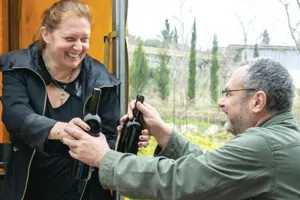First Among Equals



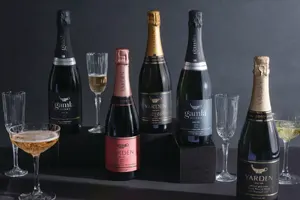
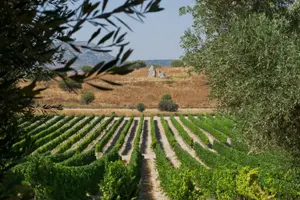
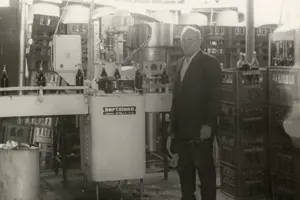
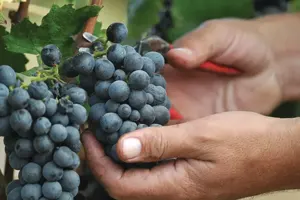
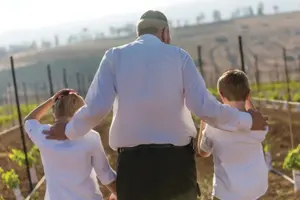


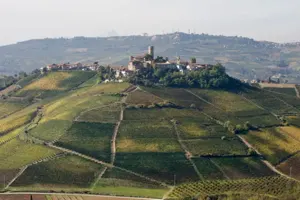
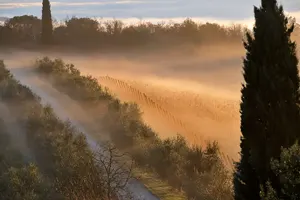

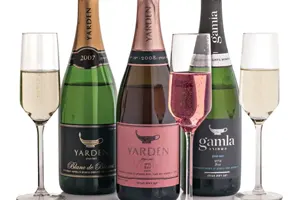
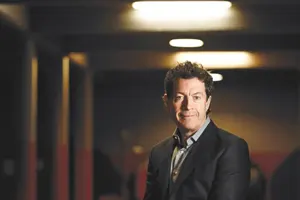
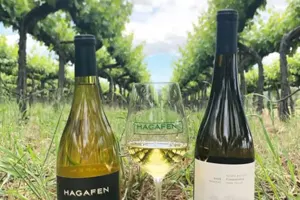


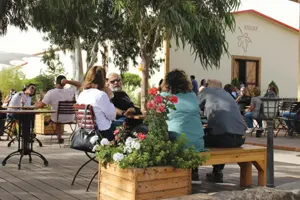
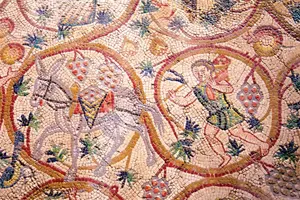
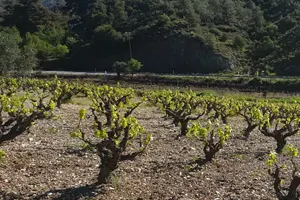
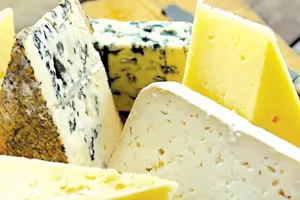

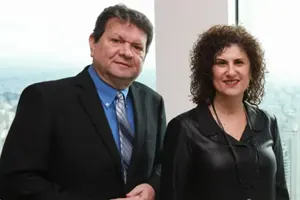

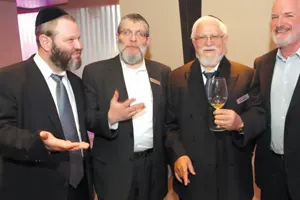
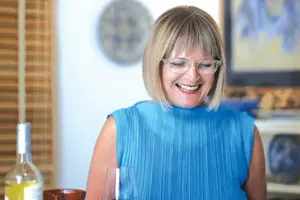
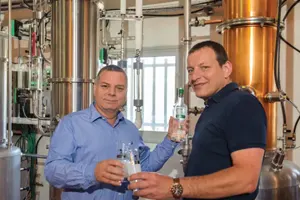

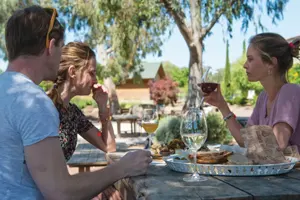
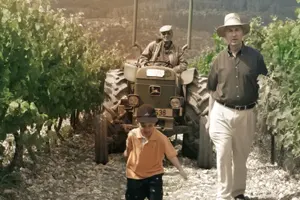

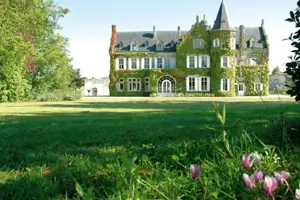

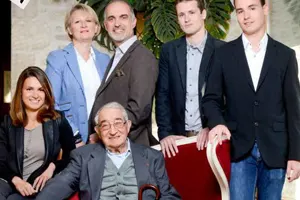
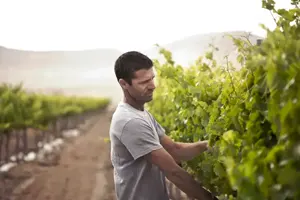
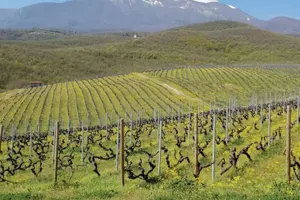
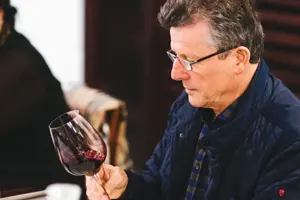
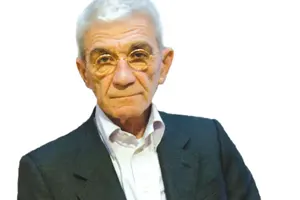
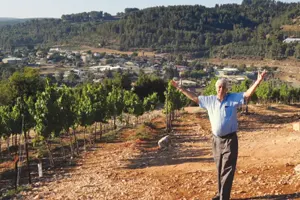


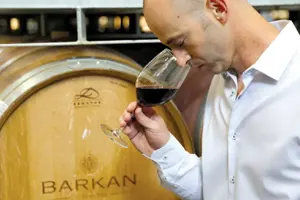
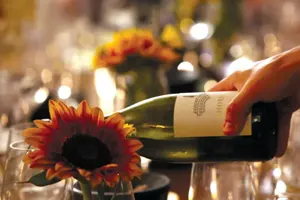


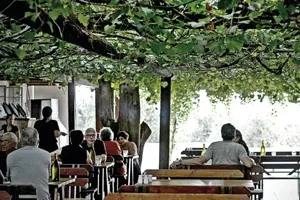
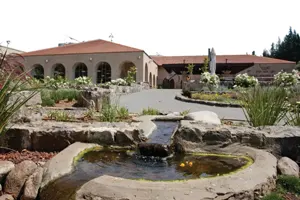



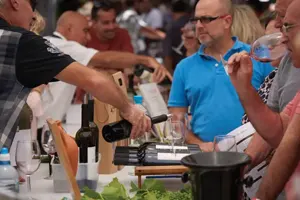
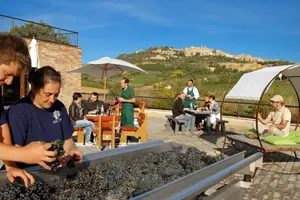



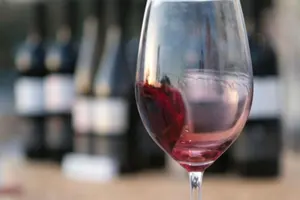
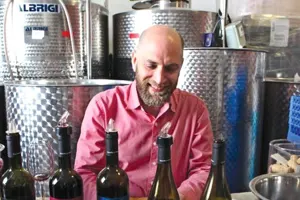



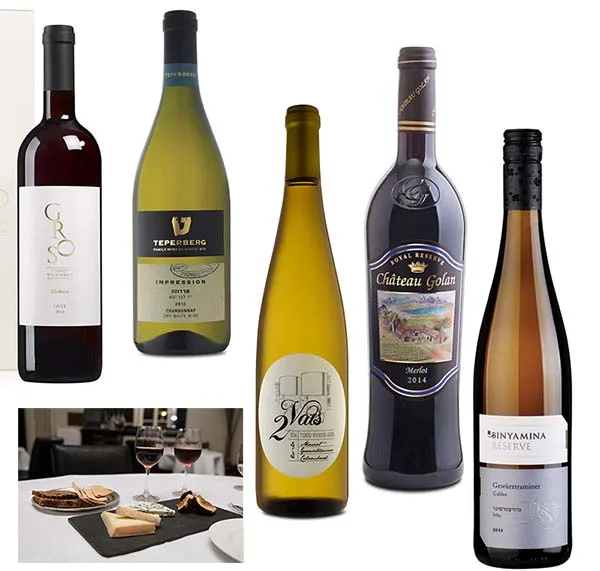
Hard to believe today, but in the early 1990’s most of the wines drunk in Israel were white. Then a few things happened to change the masses to red. Firstly there was the American TV program, Sixty Minutes, which highlighted the ‘French Paradox’. This proved that even with a bad diet, those who drank red wine could be healthier. It did wonders for red wine sales around the world.
At around this time, wineries also learnt to make some entry level red wines in similar style to white wines. That is simple, fruity, easy drinking, refreshing and not astringent. So newcomers to wine, who wanted to show they were amongst those that ‘understood’, could drink a young fruity red wine, lightly chilled and enjoy it, basically like a white wine.
Furthermore, those keen on matching food and wine realized that it was okay to drink red wine with fish and to hell with the rules. Finally a new drinking public decided that quality wines were red wines. So today, for all these reasons and more, over sixty per cent of the wine we drink in Israel is red. However there are trends that indicate a return of interest in white wines.
The reasons are that white wines are far more versatile to match with food than reds. Furthermore, white wines are far more suitable for our hot climate than red wines.
As we approach Shavuot, people begin to think of cheese and wine. In western culture, cheese is normally part of a meal and there is usually a whole course devoted to cheese. The English will normally enjoy cheeses at the end of the meal, after the dessert. This would traditionally be accompanied by a glass of Port, the famous fortified wine from Portugal. The French will serve their cheeses after the main course and before the desserts. This enables the red wine served with the main course to be continued with the cheeses.
In countries like Switzerland and the Netherlands, cheese is often served at breakfast. This would also be true of Israel. The famed Israeli breakfast covers a large range of dairy products, where there are no problems of kashrut, (mixing milk and meat.) In countries like Greece & Spain, cheese will often be served as part of the mezze or tapas at the beginning of the meal.
In Jewish culture though, we have the traditional of serving dairy products at the Festival of Shavuot. This gives the perfect opportunity to hold a cheese and wine party. The phrase, ‘cheese and wine’ rolls off the tongue. They are natural partners like Ginger Rodgers and Fred Astaire. There is a famous saying in the English wine trade: “Buy on an apple, sell on cheese.” This does not mean that every wine goes with every cheese. For instance, there is regular misconception that red wine is the most natural partner to cheese, but there can be some awful clashes. Funnily enough, white wines can often go better and be more versatile.
There is something satisfyingly rustic with having a meal of freshly baked, crusty bread, with a variety of cheeses and a carafe of wine. Have you ever enjoyed the experience of ordering what is called a Ploughman’s Lunch in an English pub
The wine world is complicated enough. Well the cheese world is if anything even more complicated. There is such variety. Cheese may be strong flavored, fat, acidic or salty. It can be hard, soft, creamy or crumbly. It can be matured, pasteurized or unpasteurized; made from goat’s milk, cow, or sheep. President Charles de Gaulle once said: “How can anyone govern a nation that has two hundred and forty-six different kinds of cheese And he was talking only about France!
However to prepare a cheese and wine party is relatively easy to do. You will need to decide if you want to go international or Israeli. There are plenty of good quality options here too. As a simple guide, I suggest you choose at least four different types of cheese as a minimum. These could be a hard cheese, a soft cheese, a goat’s cheese and a blue cheese. This is enough to give the necessary variety.
The hard cheese may be something like Emmental or Gruyère. A good white wine match would be a Chardonnay. The Teperberg Impression Chardonnay 2016 is recommended and great value. A good semi dry alternative would be the innovative Carmel 2 Vats, a grapey, aromatic wine blend made from Muscat, Gewurztraminer, Colombard and Riesling.
An aged hard cheese, like Parmesan or Cheddar, would be better with a red wine. I recommend the Chateau Golan Merlot 2014 (not kosher) or the Gross Shoham Onyx 2014. Both show complexity and have the fruit, richness and structure to be a good match. In the same way the English add milk to lessen the tannin of the strong tea they drink, the cheese will soften the tannin of the wine. Remember an older, matured cheese will be tangier with a more pronounced acidity. Note cheeses start bland and become stronger as they age. With wine it is the opposite. Older wines are less tannic and astringent.
The goat’s cheese could be a Chèvre. The options are endless because Israel excels in this category. There some wonderful Israeli goat’s cheeses from boutique dairies. They tend to have a strong goaty character, but can go with either white or red wines. However, the classic combination for a young goat’s cheese is a varietal Sauvignon Blanc, which is very aromatic, totally dry and with a sharp, refreshing acidity. The Tabor Adama Sauvignon Blanc 2016 is one of the best Sauvignon Blancs in the country.
The soft cheese, may be a Brie or Camembert. If this style of cheese is too young, it will be virtually tasteless, and your guest will wonder what all the fuss was about. However if it is older, and runny, it can be so pungent as to be too strong for any wine. A balance between the creaminess and the flavor is what is desired. This is the hardest category to find a match. A creamy, fatty cheese will make most reds seem like water. The fat in the cheese will neutralize the tannin, but an oaky and tannic red wine will taste slightly metallic when these cheeses are ripe and runny.
A Brie or Camembert would best be served alongside a light red wine with lots of fruit, good acidity and no tannin. Any red from the good value Dalton Kna’an range would be ideal.
The classic blue cheeses are Stilton and Roquefort. The match made in heaven is to drink them with sweet wine because the saltiness of the cheese and sweetness play a concerto of matching flavors in your mouth. Opposites attract. The Binyamina Late Harvest Gewurztraminer 2015 is an international quality dessert wine, rich and complex, yet not cloying. Salt accentuates tannin so the myth that red wine goes with all cheeses is shown to be most false when a red wine is matched with a blue cheese.
That only leaves us with the dessert to eat after the cheeses. Obviously this is likely to be …a cheesecake! No surprises there. The best wine to enjoy with the classic New York style of cheesecake is a fortified Muscat.
Serve the cheeses at room temperature, so take them out of the fridge in advance. Decorate the cheese platter with grapes, served cold from the fridge, chutney, with some walnuts and finally a few cut vegetables, like carrots and peppers of different colors. Celery also provides a crisp, refreshing partner to cheeses. Buy some crusty baguettes, which you can cut just before people arrive, and have some healthy crackers available too.
As for wines, we have to be practical. You can’t have available every option I have mentioned. However, for the absolute minimum, you need a white wine, a red wine and a dessert wine. Provide one glass for everyone and you will have prepared the easiest party you have ever hosted.
Israeli cheeses are so good and have gone through a similar quality revolution to Israeli wines. We all love cheeses, but sometimes worry about eating too much for health reasons. How lucky we are that the Jewish faith has catered for us a festival, where we can make the most of the opportunity with a smile!

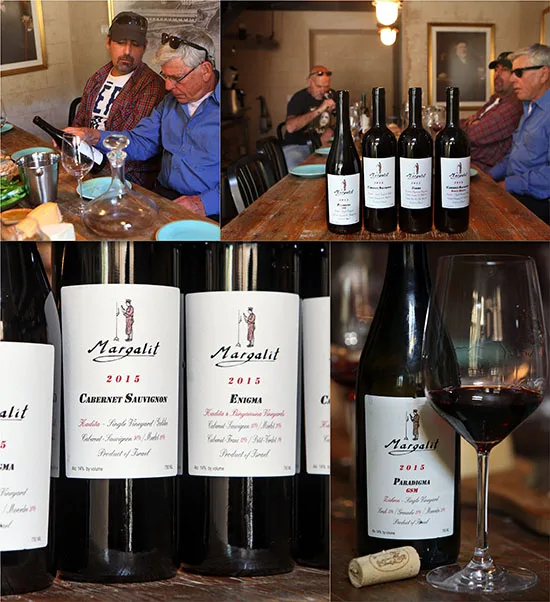
Nearly one hundred and thirty years after Baron Edmond de Rothschild decided to planted vines in the valleys surrounding Zichron Ya’acov, the esteemed Margalit Winery has launched a new wine from their new vineyards planted there. It is a short in the arm for this most traditional of wine regions.
Rothschild loved the Mt. Carmel area. He fell in love with the sea, vineyards, hills and valleys, and decided to create an Israeli wine industry. He thought this was the Tuscany or Provence of Israel. He planted vineyards and built a very large commercial winery with deep underground cellars.
With time the vineyards of the Mount Carmel region became unfashionable as, in the search for quality, Israeli wine moved northwards and eastwards to the Galilee, Golan and Judean Hills respectively, in search of higher altitude.
Even wineries, with strong vineyard representation there, like Carmel and Tishbi, searched elsewhere for their better wines. The northern coastal region of vineyards was more an historical and folksy footnote, rather than the cutting edge of the new Israeli quality.
Dr. Yair Margalit has been a constant figure of the Israeli wine scene during the last 30 years and he remains one of the founding fathers of the Israel quality revolution. more » His interest in wine began from the time he was a visiting research professor at The University of California at Davis in the chemistry and enology departments.
In 1985, the veteran grower Yonatan Tishbi, decided to form his own winery and invited Yair Margalit to be his first winemaker. After a few years of home experimental winemaking, he founded Margalit Winery in 1989. In the first vintage they produced a mere 960 bottles. Margalit was the first serious boutique winery with quality and staying power.
The first wine was a Margalit Cabernet Sauvignon 1989, which was launched in 1991. It quickly gained a following amongst the wine cognoscenti as one of the best red wines in the country. The 1993 was one of the legendary vintages and it became Israel’s first cult wine.
From these little beginnings, Margalit wines grew in production, reputation – and price, but they never outgrew the ‘small boutique winery’ category. The wines became sought after and the rareness of the production created even more demand.
Yair Margalit would invite prospective customers to the premises at Kfar Bilu in Rehovot on two days a year. He offered them the opportunity to buy wines in advance and at slightly reduced prices. Today the wine lover has any number of wine tastings, launches or boutique wineries to visit on any given day of the year. In those days, the idea was innovative. It was a rare place for wine collectors to meet a winemaker, taste wine and buy wines not readily available elsewhere.
After Rehovot, the winery moved to a packing house just south of Hadera. It has now settled in Binyamina, near the station.
The wine that Margalit became most famous for, was his Cabernet Sauvignon and Cabernet based blend, but his strictly allocated Special Reserve, a Cabernet Sauvignon with up to 15% Petite Sirah, was also a unique and magnificent wine. Over the years he flirted with white varieties producing a Sauvignon Blanc and Chardonnay. He also produced a Carignan in 1999. It is a fact that the winery grew to specialize in the main Bordeaux varieties, Cabernet Sauvignon, Merlot and Cabernet Franc. However, credit where it is due; the rejuvenation of Petite Sirah and Carignan in Israel, a significant trend of the 2000’s, may be said to have started with Margalit. He also was the first to produce a varietal Cabernet Franc.
During all this time, Yair Margalit generously gave his time and expertise to advise and assist other new boutique wineries. In this way he helped fuel the boutique wine revolution. He continued to teach and lecture at Faculty of Food Technology in Haifa, and became the first professional manager & coordinator of the Cellar Master Course at Tel Hai College. He also found time to write books on winemaking. They are text books eagerly used by budding winemakers, students or especially interested connoisseurs.
Eventually, Yair’s son, Assaf, came into the business. He began by helping his father. After studies at the Hebrew University’s Faculty of Agriculture in Rehovot, he went to gain experience at Jekel Winery in California. They became a father and son partnership. When he became winemaker, with the ongoing advice of his father, Margalit wines became more elegant and old world in style and less concentrated. In other words they have changed as the Israeli palate has developed to ensure they are still leading the quality curve. However they have remained specialists in Bordeaux varieties, Cabernet Sauvignon, Cabernet Franc and Merlot.
Assaf is a laid back figure. Broad backed, hair swept back in a cuckoo, usually wearing a t shirt, he is quiet, chilled out and easy going. When winemaking or talking about his winery, he undergoes a metamorphosis. He becomes animated, passionate, hands on and the pride and perfectionism shine through. Only then do you receive an insight into why Margalit wines continue to maintain their position as one of Israel’s finest wineries. He is without doubt one of the leading winemaking talents in Israel today. It seems the apple has not fallen far from the tree.
Up to now, the wines came from two vineyards. One is at Kadita in the Upper Galilee, in the foothills of Mount Meron, from where the winery receives its Cabernet Sauvignon and Merlot. The other is in Binyamina, where their Cabernet Franc is grown.
So when the son and the father decided to plant Mediterranean varieties like Syrah, Grenache & Mourvedre, it was a surprise because the winery was so associated with Bordeaux varieties. Like many in Israel, they have decided that an eastern Mediterranean country should also grow Mediterranean varieties. However being Margalits, they were not satisfied with purchasing grapes. They wanted their own vineyards and one would have thought they would go north. However, after a seven year search they found what they were looking for in Zichron Ya’acov, just like Rothschild so long before. Their vineyard lies in the part of the Hanadiv Valley that rises towards Zichron. There they chose a plot with a light, chalky soil to plant their new Mediterranean varieties along with Chardonnay and Riesling.
Only now after a further four years of experimentation they launched their new GSM wine (a Mediterranean style wine made from Grenache, Syrah and Mourvèdre). The new wine which heralds the new direction is called Paradigma. Their Bordeaux blend is called Enigma. One symbolizes clarity, the other mystery. An interesting choice of names, which at least may encourage you to find your Roget’s Thesaurus!
Margalit Winery continues in a quiet unobtrusive way. All is very low key, laid back and the marketing is like the labels, on a principle of less is more. Let the wines speak for themselves. No frantic press releases, promotions, press events here. I recently tasted the 1996 Special Reserve. The nose was superb but the wine showed its age on the palate. I was then offered the sublime 1997, drinking superbly after 20 years. It was astonishingly good. Without doubt the two Israeli wineries best able to cope with long term cellaring are Yarden and Margalit. Remember that when you buy wine to lay down for your children!
In his own quiet, unobtrusive, but professional way, Yair Margalit, has contributed greatly to Israel wine, as a winemaker, wine educator and as a symbol of the new quality. Now Assaf has taken the winemaking baton. To paraphrase David Ben-Gurion’s eulogy about James Rothschild: “Assaf is an outstanding winemaker, son of an outstanding winemaker, whose family name will be ever associated with the rise of quality Israeli wine. “ A journey from Rothschild to Margalit, and you have in essence the story of Israeli wine.
Margalit Paradigma, Zichron 2015
A blend of 50% Syrah, 30% Mourvèdre & 20% Grenache. Their first Mediterranean expression. Syrah provides fruit, the Grenache perfume and the Mourvèdre texture. This medium bodied wine is deliciously delicate, with bright fruit, a chewy texture and a refreshing finish. Price: 150 ILS
Margalit Cabernet Sauvignon, Kadita 2015
Made from Cabernet Sauvignon and a little Merlot. Very elegant and 2015 was not an easy year. Aromas of black fruit, well integrated oak with soft tannins and a long finish. Price: 199 ILS
Margalit Enigma, Kadita, Binyamina 2015
A Bordeaux style blend of Cabernet Sauvignon, Merlot, Cabernet Franc & Petit Verdot. Full bodied with deep aromas of blackcurrant and blackberry and ripe plum, a rich, complex flavor and a long balanced finish. Price: 240 ILS
Margalit Cabernet Sauvignon Special Reserve, Kadita 2015
Made from Cabernet Sauvignon & a little Durif (aka Petite Sirah). This wine is concentrated yet elegant with layers of complexity. The aromas are of black fruits, followed by spice and smoky notes on the palate. A wine to savor. Price: 298 ILS
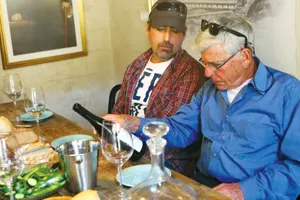
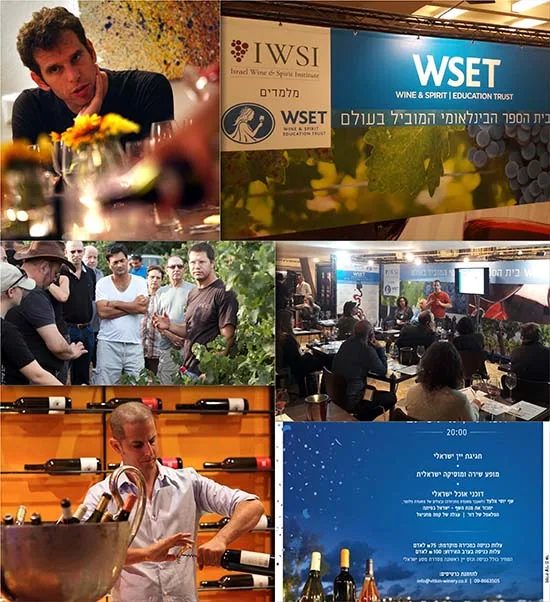
Back in 1979 I was working for the brewery Charrington, part of the Bass Charrington group. By chance I was put on a wine course at the Wine and Spirits Education Trust (WSET) in London. Why Not because I expressed any interest in wine, but because they were short of numbers and I was available. This was the first step in what turned out to be a long career in wine. I remember I was given a copy of Hugh Johnson’s Pocket Wine Book for participating in the course. My first wine book. Who was to know that I would later become a contributor to this same book
The rest was in the hands of inspiring teachers and an open minded student. With wine, passion spreads like a rash. It is very aspirational. The more you know, the more you want to know. The wise teacher implants the interest, the passion and then the hunger to know more. They teach you to love the subject and then prompt you to learn about it. The more you know, the more you realize how little you know. The yearning further intensifies. Then wine takes over your life. When you are not drinking, you are tasting it, talking about it or reading about it. It becomes all consuming. Luckily Bass Charrington had wine interests. I was hooked and they sent me back to the WSET for further studies.
Blessed are the teachers that can install love and passion into the willing student. In the late 1980’s when I arrived in Israel, the main wine teachers were Effie Winter, Israel Assayel and Charles Loinger. Winter was an amateur enthusiast. Israel Assayel was self-taught who became a professional pioneer as an importer and retailer. Charles Loinger was the retired director of the Israel Wine Institute who was a consultant for Carmel and lectured on wine.
Incidentally Loinger was recently awarded the Terravino Lifetime Award, which he accepted at the ripe young age of 96. As he stood up unaided and gave a fluent speech, he notified the audience, as though to explain that he was not that old, that he had a brother living in Paris who was 105 years old! Of course we all know wine is good for you. My own famous forebear, Sir Moses Montefiore drank a bottle of wine every day and lived into his 101st year, well above the average age of the time. The proof of the pudding is clearly in the eating.
In the 1990’s the most popular wine course was given by Kobi Gat at Carmel Mizrahi. He was a winemaker, agronomist and sparkling wine specialist with Carmel, who diversified to become host of the most important wine course of the time. At the same time Tal Gal Cohen was creating the best barman courses under his company Eshkolot. Both courses were held at Carmel’s Rishon le Zion Cellars, a poignant thought now that Carmel have evacuated the historic site, closing down Israel’s most historic winery forever. Others students would go to the Technion, where they would learn from Dr. Yair Margalit, winery owner, winemaker, author and educator. He is still offering wine appreciation courses there.
In the mid-nineties two wine schools were started. Firstly was the Soreq Winemaking School established by Nir Shaham. This is the unsung hero of Israeli wine education. Countless new winemakers of domestic, gargiste or boutique wineries have passed through his hands. The school continues to go from strength to strength. He is always quiet, in the background, but he has been no less effective because of that. He has had a massive influence over the last twenty years.
The Golan Heights Winery set up a wine school with Shaked Bros. in the basement of their original Derech Ha’Yayin store in Tel Aviv. The manager of the school was the young Yair Hajdu. The school was not a great success, but Hajdu was able to take the opportunity given to build his own brand. He is today regarded as one of the most respected wine experts in Israel.
Barry Saslove, was a wine lover, who later became owner of Saslove Winery. He began to offer wine appreciation courses with his boundless enthusiasm and ability to convey and share the complicated world of wine.
By the early 2000’s the main wine courses were held by Derech Ha’Yayin chain of wine stores and Haim Gan’s Ish Anavim. This was an independent organization set up in Jaffa peddling wine culture. Over the years this has included wine events, competitions, festivals, auctions, and most important for the aspiring wine student, tastings……and courses. To many, Haim Gan became a guru like figure.
In the last ten years or so, colleges started provide courses which lasted a full academic year. Tel Hai’s Cellar Master Course and Ramat Gan College’s Wine Academy Course provided a longer course with a college certificate presented to those that completed the program successfully. Then, the Ohalo College in Katzrin started offering courses for prospective winemakers, and Ariel is the latest to join the wine education bandwagon.
The main Israeli wine education heroes have been Israel Assayel, z”l, Koby Gat, Yair Margalit, Nir Shaham, Barry Saslove and Haim Gan. They have given so much to the Israeli wine scene. They have both supported and led the consumer wine revolution here. Their praiseworthy efforts over more than 25 years, has now been complemented by two exciting, new initiatives.
Firstly, the WSET, where my wine story began so long ago, has finally made its way to Israel. Founded in London in 1969, it is now active in 73 countries worldwide. People are always curious about London’s place in the wine world. Well for 300 years, London was the center of the wine trade. It remains the most cosmopolitan wine market in the world and a disproportionate number of the world’s most prominent wine writers and experts are British. Wine trends began in London and this was where the Institute of Masters of Wine, Court of Master Sommeliers and WSET were all founded.
The WSET has been brought here by certified educator Gal Zohar. Courses are offered at Level 1, 2 or 3. The course is administered by The Israel Wine & Spirit Institute headed by Gal Zohar, the wine expert, and Ronen Arditi, the restaurateur. Gal Zohar is a graduate of the WSET Diploma program. He is an international sommelier, wine judge in international competitions, a sought after wine consultant by restaurants and hotels and co-author of the New Israel Wine Guide. Ronen Arditi is an owner, educator and consultant for restaurants.
This new set up is to be welcomed to freshen and update wine education in Israel and to bring it to international standards. Certainly for those in the wine trade, it offers a recognized qualification and is arguably the most respected wine education school worldwide. It will be the number one place in Israel for wine education of wine professionals, wine waiters, sommeliers and restaurateurs.
The graduates of the WSET, who studied in the UK, may be found amongst the leading wine professionals in Israel. They include Eran Pick MW, winemaker & CEO of Tzora Vineyards; Aviram Katz, journalist & sommelier; my son David Montefiore, wine culture manager of Tabor Winery & wine department manager of IBBLS; Debbie Shoham, ex Golan Heights Winery, and the prominent sommeliers Mor Bernstein and Shira Tsiddon, sommelier of the Norman Hotel. In Israel only three individuals have the WSET Diploma: Eran Pick MW, Gal Zohar and Chaim Helfgott.
Secondly, in a further exciting development, the Robert H. Smith Faculty of Agriculture at the Hebrew University, is opening the first academic degree program in Israel for winemakers, offering an international MSc in Viticulture and Enology. Heading the program is Professor Zohar Kerem, a researcher in food chemistry, wine quality and olive oil, and very well-respected Yotam Sharon, once winemaker at Barkan Winery, and now a winemaking consultant. Other lecturers will include Prof. Ben Ami Bravdo, Prof. Oded Shoseyev and Dr. Ron Shapira.
So for people just curious about wine, wine lovers, wine professionals and aspiring winemakers, the choices and opportunities for wine education, whether informal or formal, have never been better. There is a full spectrum of educational opportunities here. Let’s start to educate and enthuse the next generation, teaching them to love & learn about the wonderful world of wine!


Passover is of course not just Seder Night and the Festival of Freedom, it is also the Festival of Wine. When and where else, are we commanded to drink four glasses a night The order of the evening is exactly set up like a Roman banquet, with the wines spaced out to last the length of the evening.
In a banquet, there is an etiquette molded by years of practice. A sparkling wine will be the aperitif. The white wine will go with the first course. The red wine will accompany the meat course and a sweet dessert wine will go with the dessert. The order is dictated by custom and common sense. For instance, you don’t eat the meat course before the soup, or the dessert before the main course. Similarly you don’t drink red before white or sweet before dry.
For Seder Night the rules may be similar. A sparkling wine or lightly sparkling Moscato can be the first glass. There are some slaves to tradition who will insist on a Kiddush wine for the first blessing. Others will drink these sacramental wines for the four cups, and then have separate wines for the meal.
I remember Seder Nights as a child with Palwin, (short for Palestine Wine, that Brits were weaned on), on the table. I quite liked it and it felt quite naughty to be drinking wine at a grown-up event. Now I am in the wine trade, I feel ashamed at the memory that I enjoyed it so much! If you do buy a Kiddush wine, I definitely recommend serving it cold because it will taste better.
I do not remember we ever drank grape juice back then, but many choose this as the safe family option today. I personally think a taste of alcohol is important to make this night different from all other nights. If you have children or guests that simply dislike wine, think of a low alcohol Moscato instead. Sweet, slightly sparkling and low alcohol, it is the perfect family wine for Shabbat and festivals. The Hermon Moscato or Buzz Moscato are options which even the great aunt who hates wine will like.
The second glass can be a Chardonnay, Sauvignon Blanc or a semi dry Gewurztraminer. This can continue to be enjoyed with the first course of the meal. For the meat course a Cabernet Sauvignon, Merlot or Syrah or a blend can be chosen and this will also suffice for the third glass. The fourth glass I recommend a sweet dessert wine, a nice way to finish the evening. Done this way, the need for ritual wines and dinner wines are combined.
Anyway Passover is a time for tradition, and each family has its own customs. Some insist only on red wines because of tradition, others on whites because of the blood libel. It is all open and acceptable to follow your own minhag.
When I am at a small seder, the wines I choose are special and rare, and kept especially for the occasion. Obviously the people present appreciate the wine investment for the evening, so it is justified. The wine aspect is an integral part of our seders. If it is a big seder, then the wine buying is muted down accordingly, not only so there is something for everyone but also something everyone will like. Also you are not going to serve up that twenty year old wine for all your uncles and and aunts, sharing the precious liquid with 20 people, who may not even like it. The size of seder helps to dictate the price you want to pay for the wine.
If you are buying on price alone, there are very competitive prices this year. All very good for the consumer! The Hermon range, from the Golan Heights Winery, are the best in this group. The Mount Hermon Red and White are at record low prices. Other brands which almost by definition will need to be even cheaper than Hermon, are Carmel Selected, Barkan Classic and Segal Red. It is going to be a real buyers’ market this Passover. So look around. Make no mistake, at the promotion prices these wines will stoop to, they are good buys.
If you want to go one stage up, into the three for 100 shekel category, I suggest anything from the Tabor Har range (with the recognizable yellow capsule) or the Recanati Yasmin label. The Har whites, in particular Chardonnay and Gewurztraminer, and Yasmin red are particular recommendations. The Dalton Kna’an label, also offers good value for money.
If your search is for better wines in the supermarkets, I recommend Gamla and the Appellation wines of Carmel. I believe the Appellation Cabernet Sauvignon 2013, (look for the new label, not the old one), is a very good wine that punches well above its weight. At the price of between 45 to 55 shekels, it is a real bargain.
If you are out to impress, then the entry level wines from the some of the best wineries in the country are always best buys and never disappoint, but this is in a category nearer 100 shekels. Tzora Judean Hills, Flam Classico and Castel’s new La Vie line of red and white are options. The Tzora Judean Hills Red is a perennial favorite of mine being perfectly balanced. To plagiarize one of my favorite tasting notes ‘it has everything, but not too much.’ Castel’s La Vie Blanc is a fragrant wine that white wine drinkers will like.
If you are looking for the best of the best, my personal choice would be C Blanc du Castel or Tzora Shoresh White as the white wine (respectively a Chardonnay and Sauvignon Blanc) and Castel Grand Vin, Flam Noble or Tzora Misty Hills as the red wine. The best sparkling and dessert wine are an easier, more clear cut choice. They are the Yarden Blanc de Blancs and Yarden HeightsWine, both produced by the Golan Heights Winery.
Of course these are from kosher wineries. If I could add in non-kosher wineries, I would have to include the Clos de Gat Chardonnay and a red wine from Margalit Winery. They don’t have a kosher certificate, but they are made by Jews who are not idol worshippers (the reason that the whole issue of kosher wine separation began.) Once they would have been kosher enough with a small k, but that is the subject of another article.
Today the choice is yours and it is your opinion that counts not mine. There are hundreds of Israeli wines producing quality wines these days. It is no longer a question of choosing a good or bad wine, but choosing the one you like or know, or the one with the best deal. It is a great time to be buying Israeli wine. Unlike the airlines and hotels which put up prices at peak times, in the wine trade we heavily discount. So take time to look around and enjoy the opportunity, and buy within your means.
As a rough estimate, the number of 750 ml. bottles you will need for each Seder, including Elijah’s Cup, is roughly as follows : For 6 people you will need 5 bottles; for 12 people you will need 10 bottles.
My final advice is buy what you like. Don’t worry about trying to match the wine to each course. Today we say: ‘Match the wine to mood not to food.’ Or even, ‘match the wine to the person you are buying for.’ I say match the wine to the person purchasing. In other words, buy what the hell you like. Take the pressure off. It does not matter anymore, so choose what you want to drink. If you are the wine buyer, going to all that trouble for your guests, you might as well choose something you will enjoy.
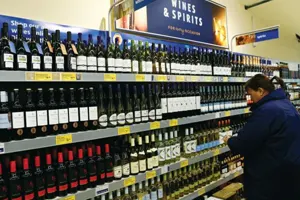
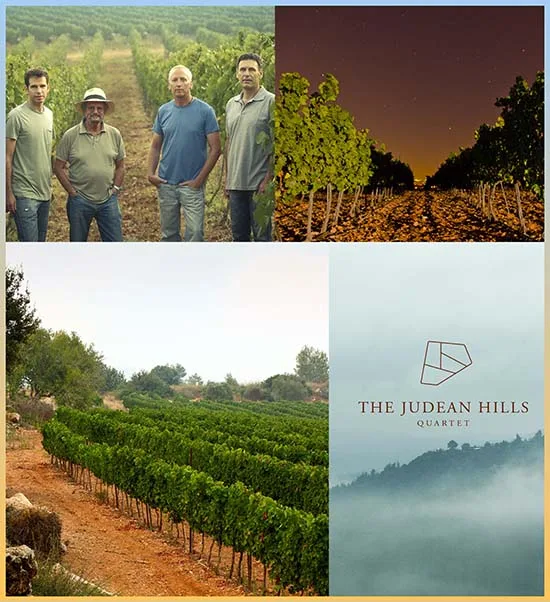
The Judean Hills are flowing with wine, echoing the words of Amos the Prophet. Recently, four of Israel’s finest wineries decided to pool their efforts to advance the Judean Hills as a relatively ‘new’ quality wine region, in exactly the same place where wine was made thousands of years ago.
In Biblical times this region was a center of wine production. In those days, people drank far more wine than today, because it was safe, whereas water was a carrier of disease. Vines were grown in terraced vineyards, brought to a nearby ‘gat’ or limestone wine press for fermentation. The resulting wine was put into large amphorae (pointed clay vases with large handles) and then stored in cool caves. The wine was later exported and it was much prized by neighboring countries. Wine was one of the mainstays of the economy.
After the Muslim conquest, the wine industry simply dried up. Of course, individual Jewish families in places like the Old City of Jerusalem continued to make wine at home purely for religious ritual, using food grapes grown by Arabs in Bethlehem and Hebron. However, the once proud industry was laid waste.
The revival of Israeli wine had to wait until the late 1880’s. Then Baron Edmond de Rothschild built wineries and planted vineyards. As far as the Judean Plain was concerned, he planted vineyards in the flatter part of the Shefela, south east of where Tel Aviv is today. It was only in the 1950’s and 1960’s that there was a program to plant vineyards in the rolling hills known as the Judean Foothills. This was encouraged by the Jewish Agency. In the seventies and eighties there were further plantings in the higher elevation Judean Hills. However, these were vineyards to supply the large wineries. The objective in those days was quantity and the word quality did not enter the equation.
In 1988, a restaurateur named Eli Ben Zaken planted a vineyard and produced a wine. He was a Francophile and called his wine Castel Grand Vin and he put Haut Judée on the label, Judean Hills in French. This was a tiny production of a handcrafted wine, but it was the first attempt at quality in the region and the first time the appellation appeared on the label. In 1995 Serena Sutcliffe, MW, Head of the Sotheby’s Wine Department, wrote it was the finest Israeli wine she had ever tasted. With great passion, absolute perfectionism and great attention to detail, Domaine du Castel was born and brought quality to the Judean Hills.
At the same time, a veteran grape grower named Ronnie James, who grew grapes that were sold to the Carmel Cooperative, felt an urge to produce his own wine from his own grapes. In 1993 he founded Tzora Vineyards, and became obsessed with creating a Judean Hills terroir. His charm, smile, and ‘salt of the earth’ character touched and motivated many people.
Almost by example, these two pioneers succeeded in changing the focus of a region. New vineyards were planted, a series of small wineries opened and pursuit of quality became the order of the day. Now the Judean Hills is thriving and one of the most dynamic wine regions in the country.
So, it is not surprising that Castel and Tzora are two of the four wineries. They have been joined by Flam Winery and Sphera, and have called their new consortium The Judean Hills Quartet. Their objective is to spread the message about the Judean Hills, rather in the same way that the Golan Heights Winery did with the Golan a few years ago. They are four of the best.
Domaine du Castel is quite simply the winery that has set the style and quality for Israeli winemakers. They have just moved in to a magnificent new winery at Yad Shmona, near Neve Ilan. Eli Ben Zaken has twice built the most beautiful winery in Israel. That is quite something. The new winery is a real cathedral (or should I say Beit Mikdash) to quality.
Tzora Vineyards has continued to develop since Ronnie James passed away, before his time. One of his last decisions was to bring in a young tousle haired winemaker in 2006. His name was Eran Pick, and he has since become Israel’s most famous winemaker having become Israel’s first ever Master of Wine. He is devoted to making wine from individual plots within the Shoresh vineyard. He is a determined artist with a great deal of talent, drive…and important in the wine business, patience. It is so appropriate and fitting that Tzora’s viticulturist is Dor James, Ronnie’s son.
Flam Winery is the creation of Israel’s most prominent wine family. Two brothers, Golan and Gilad, and their sister, Gefen, founded Flam Winery and they chose to build their beautiful winery in the Judean Hills at Eshtaol. Their father Israel, was the legendary chief winemaker of Carmel, over many years and their mother Kami, runs the finances of the company with an iron grip. It is a true family affair. Golan Flam is the winemaker, who studied in Italy. He is dry, poker faced and silent, until you get into a vineyard where he becomes positively talkative, as though his passion has burst out like a bubbling brook.
Sphera is a winery which has a slogan ‘White Wine Professionals’ and it is devoted to making white wines only. The owner winemaker Doron Rav Hon, who studied in Beaune in Burgundy. A perfectionist whose raison d’être is minimalist, precision and delicateness. Sphera is one of the main white wine pioneers in the country.
Those who follow the most influential wine critics in the wine world, will not be able to ignore the high profile of these Judean Hills wineries. Castel was the first Israeli winery to gain four stars in Hugh Johnson’s Wine Book, and has since been joined by Flam. In Robert Parker’s Wine Advocate, Castel has scored a best for Israel 94 points and is arguably the best performer year in and year out with all their wines achieving high scores. Flam is one of the few Israeli wineries that have scored 93 points. As far as the Wine Spectator is concerned, the highest ever score for an Israeli wine was also by a Judean Hills winery, this time Tzora Vineyards. In addition, all Tzora’s wines scored more than 90 points and one of them featured in the Top 100 Wines of the Year. Finally Stuart Pigott, one of the world’s experts on Riesling, rated the Sphera Riesling as one of the top five in the world.
So, what is special about the Judean Hills The Judean Hills rise from 300 to 900 meters starting in the foothills and rising to the Jerusalem Mountains. The climate is Mediterranean which means warm, dry summers and cold, wet winters. There is usually no rain in the growing season, and the vineyards do not suffer from the humidity of the coastal regions. The region benefits from cooling winds from the Mediterranean Sea, and the cold air circulating from the Jerusalem mountains at night time. The soils tend to be a shallow Terra Rossa on a deep bedrock of limestone. They are well-drained and very rich in minerals. The Judean hills are covered with vineyards, but they tend to be small and varied. This encourages small winery winemaking and there are approximately thirty wineries in the region.
Quite apart from this, the region is beautiful. Pine forests surround the vineyards, limestone rocks lie scattered amongst them, and garrigue, the Mediterranean brush, sprouts close to the ground in clumps. In the spring, wild Mediterranean herbs, like zaater and oregano, mingle with the beautiful wild flowers. If you are lucky, you will see deer frolicking amongst the vines. The viticulturists place of work, is a playground to others! If you look around, you will come across fossils which underline the rich history this land has undergone over millennia.
The most surprising thing is the unusually cold spells that may found in the valleys and corridors of the Judean Hills. When you visit, the winds and temperatures will surprise you.
In wine, the place where grapes are grown is important. That is why a Californian label with Napa Valley on it, will create greater expectation (and cost) than if it was written Central Valley. In Israel, the most famous wine regions for quality are arguably the Golan Heights, Upper Galilee and Judean Hills. This new initiative will help advance the Judean Hills further and introduce it to the general wine world, outside the kosher confines.
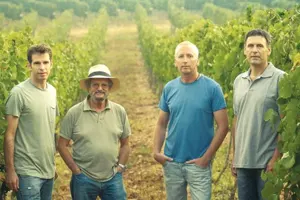

When all the talk is of quality Israeli wines which win prizes worldwide, you will be surprised, at how much grape juice and Kiddush wine is still being produced these days.
Israel produces approximately 50 million bottles a year from wine grapes. However a surprising ten million bottles of this is grape juice. These are grape juices usually made from wine grapes, marketed in glass bottles and sold on the wine shelves in Israeli supermarkets. I say ‘wine grapes’ because once wine was made from wine grapes (Cabernet, Merlot etc) and grape juice was made from food or table grapes but these days there are enough wine grapes spare. Producing grape juice is a great way of using excess grapes.
Grape juice really came in its own with the anti-alcohol movement of the 20th century which spawned Prohibition in America. The temperance movement was convinced that partaking of alcohol including wine, was a sin. Many thought that whenever the word Tirosh was used in the Bible it referred to grape juice and not new wine. It was an interpretation based on wishful thinking. Grape juice is but a short stepping stone on the way to wine and then wine vinegar. Certainly in Biblical times they did not have the techniques to preserve grape juice. Harvest grapes and naturally all they want to do is ferment. There are yeasts on the skin of the grapes and in the air that can’t wait to start fermentation. Just try and stop them. Making wine was then a way of saving the product. Leaving it as grape juice would have been impossible.
Of course when pasteurization was invented by Louis Pasteur, an American clergyman named Welch adapted the techniques to allow him to produce a commercially stable grape juice and a new market was born. Today, the giant of kosher grape juice in America is Kedem. They started to make their grape juice in the 1950’s, often using the Concord grape, so beloved by the American palate. Their grape juice has remained the choice of religious Jews in America, despite attempts of others to take a share of the market.
In Israel, the main grape juice is the Carmel Tirosh produced by Carmel Winery since the 1930’s. It is the largest brand in the Israeli ‘wine’ market. Until recently it was known simply as Tirosh. For consumers the word Tirosh meant Carmel. However, in the 2000’s exclusive use of the name was challenged in court and now every grape juice producer has a product named Tirosh.
Just as Americans prefer the Kedem Grape Juice above all others, the Israelis prefer the Carmel taste, but it has become a more competitive business. Other wineries are today producing large quantities of grape juice including Arza, Hacormim, Jerusalem, Segal, Teperberg and Zion. The Carmel Tirosh though, remains the Rolls Royce of Israeli grape juices. It is arguably their most famous product in Israel, which has always caused problems image wise. They make very good wines today, and no quality winery wants their grape juice to be their most well-known product!
Carmel Tirosh is made 100% from wine grapes with no water, sweetener or coloring agent added. The red, (or rose as it may be more accurately described), is made mainly from Carignan sometimes with small amounts of Argaman and Petite Sirah, whilst the white is made from Colombard and Muscat of Alexandria. It is a product that families have grown up with (‘yayin for yeladim’ – wine for children) and grownups who wish to avoid the alcohol or over sweetness of kiddush wine, will continue to use it for Shabbat and festivals. It is the ultimate family product.
The other product is Kiddush or sacramental wine. Approximately four million bottles of Kiddush wine are produced annually In Israel. This is 10 % of the total amount of wine produced. This market sector is dominated by massive brands that have nurtured Jews over a lifetime of Seders, Shabbats and Festivals. Who has not heard of Manischewitz , Mogen Dovid or Kedem in America or Palwin in Britain These are brands with a big following. However, arguably the most famous Israeli Kiddush Wine is Konditon.
Konditon is a word that comes up in the history of Greek and Roman wine, as well as in the Jewish literature. It was a word to describe a spiced wine. In the 1860’s the Shor family decided to produce a Konditon style wine again. In those days wine was not bottled but sold in small casks. There were no labels or kashrut certificates. You bought from someone reputable whom you knew. When bottling and labelling became the norm, Konditon became not just a style of wine, but a brand.
The wine was flavored and sweetened, but this was not new. This is what they did in Biblical times to preserve the wine and make it tasty. Wine has been made this way for thousands of years.
Hacormim is today managed by Eli Shor, a charming, kind man with boundless enthusiasm. He has a winemaker, but Konditon is his baby. He delights in describing how he flavors the wine, building the flavor. Everything is designed to recreate the wines written about in the ancient sources, and by so doing, continuing the Shor family tradition.
The traditional, classic Konditon, is fortified with brandy to roughly 14% alcohol. Its parchment like label was designed by a Bezalel artist depicting scenes from Masada & Kumran. This retails for just under 30 shekels. It is most regularly used as a Kiddush wine, but Eli bristled when I said this, and said that they prefer to categorize it as a dessert wine.
Now there is a new prestige, de-luxe edition, the Konditon 18 which comes in an attractive, stylish package. This is as a fortified dessert wine. It is made from a blend of Caladoc, Argaman, Carignan, Petit Verdot and Muscat Hamburg. It has spices from the Jerusalem area added, along with a touch of Etrog zest, also Silan (date honey) which provides the sweetness and brandy aged in the winery’s own cellar which provides the alcohol. The final wine reaches 18% alcohol, hence the name and it is matured for 36 months in oak barrels. It comes in a handsome presentation box and costs 80 shekels.
Hacormim tell the story of how my distinguished forbear, Sir Moses Montefiore, visited the Shor Winery and it was this that persuaded him to invest in Jerusalem. Visit the winery and you will still see his parents Yechiel & Nechama still coming to work, well past retirement age. When I visited recently, Nechama, sharp as a button, said : “Oh, a Montefiore once visited us 25 years ago.” What a memory! It was me! When I made Aliya I arrived on their doorstep, eager to learn about the different Israeli wines.
Loving history like I do, I especially appreciate the use of the old Shor family logo on the labels. A nice touch. The other members of the family have spawned new boutique wineries to leave the liquid religion image behind. Zion Winery begat 1848 Winery and from Arza Winery came forth Hayotzer. Hacormim though, went retro and have gone back to the old family logo, Shorr 1848 (spelt with two r’s then) for their Konditon wines.
Carmel was Israel’s first commercial winery, founded by the Rothschild family in the 1880’s. The Shor family founded Israel’s first recorded winery in 1848 in the Old City of Jerusalem.
Carmel’s growers are now in their sixth generation. These are largely the same families that planted Carmel’s first vines. They were the owners of the cooperative and now remain part owners. How rare is it for shareholders of a company to stay the same over 130 years The Shor family is in its seventh generation. Two of my children are in the wine trade. That is a mere two generations in this business. How special it is that the Shor family are still making wine after nearly 170 years. The Carmel Tirosh and Hacormim Konditon are like liquid time capsules representing the tradition and history of the wine growing families of Carmel and the winemaking Shors. Here’s hoping that they continue for many more generations!

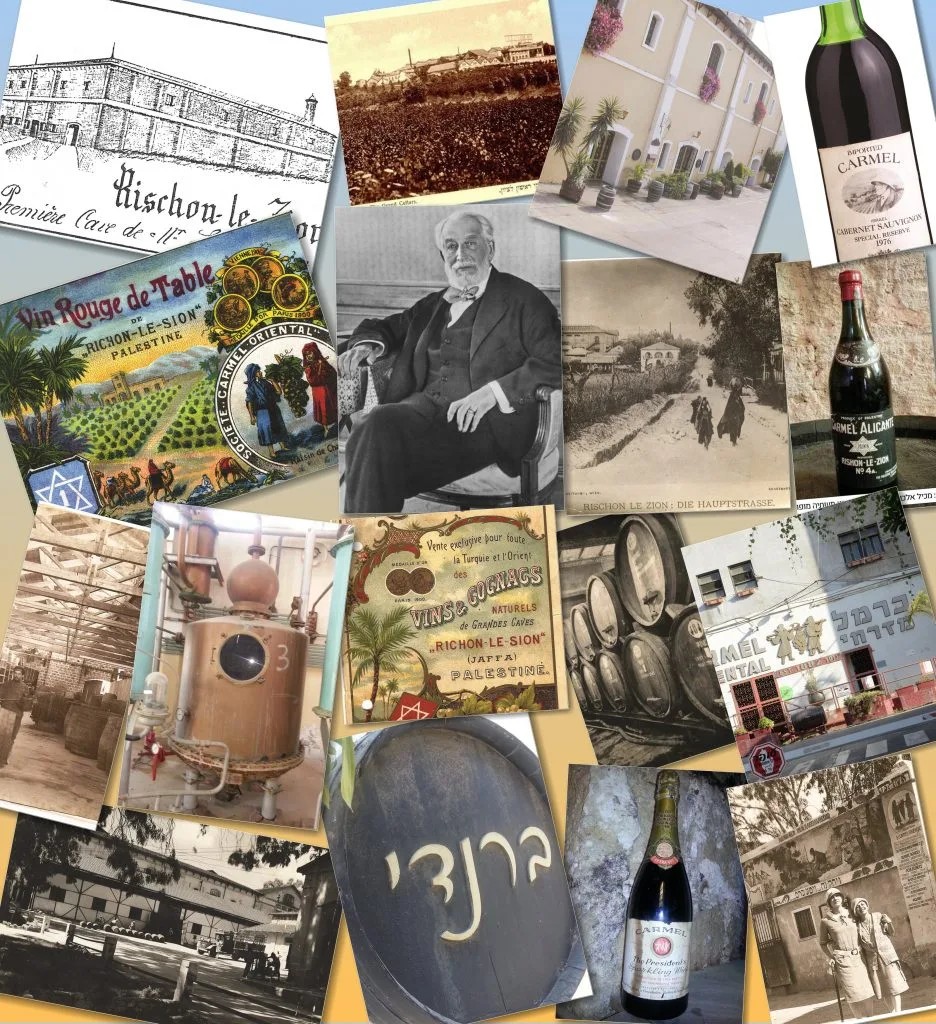
Farewell to Rishon Le Zion Wine Cellars. The final death throes have taken place and the historic winery of Israel is finally closed. It has been a long time coming. The last harvest was received there back in 2010, but offices, warehouses and the bottling plant remained. Last year the bottling plant moved to Alon Tabor and in February 2017, exactly four years after the new owners purchased Carmel Winery, the remaining employees packed their belongings and evacuated the premises for the final time.
It has been a ghost like property for some years, run down and dirty, but the place even in a state of disrepair still reeked of history. Indeed it was the largest winery in Israel for no less 120 years. In a wine industry where nearly all the wineries have been founded in the last 30 years, this represented a valuable jewel of Israeli wine representing history, heritage and culture. Whilst I don’t deny that progress is not always respectful of the past, it is also true that a part of the soul of Carmel Winery has flickered and gone out.
The story of the winery was the Zionist dream come true. It operated in three different centuries, the 19th, 20th and 21st, under the Turks, the British and the State of Israel. It represented both the story of Israel and the story of Israeli wine.
The first modern experimental vineyards were planted in Rishon Le Zion in 1882. This was the year that Baron Edmond de Rothschild sent an agronomist to survey the land and decided to build the water tower that can still be seen in the park across from the winery. After visiting, he decided to build wineries and plant vineyards and create an Israel wine industry.
When the foundations of the new winery were set in 1889, the Sultan was concerned about the amount of building materials entering the site. (Remember this was the Ottoman Empire.) He demanded building stop immediately. He feared the Jews were building a fortress. Some diplomatic smooth talking and a gift in the right direction allowed the building to continue.
The accounts books of the period are written in French (this was before Hebrew became the accepted language.) In it there is an entry entitled baksheesh, with a list of the bribes given. In those days they were recorded.
During the first vintage in August 1890, all the wine turned to vinegar. The French agronomists did not appreciate how hot it is in August. So the second year they imported an ice machine from Egypt, and put blocks of ice in the large fermenting barrels to bring down the temperature. The next year they made do with spiral pipes which they put inside barrels and pumped cold water through them. Both of these measures were only moderately successful.
So in 1893, Rothschild realized he had no alternative but to build the deep underground cellars to keep the temperatures cooler. He built six cellars at Rishon, each fifty meters long and the task was finished in 1896. The cost of building Rishon Cellars was 6 million francs. This was more than it cost the Rothschild family to buy Château Lafite, the famous Bordeaux winery.
However, Rishon Le Zion Wine Cellars was a state of the art winery and very large even in world terms. The winemaker was from Bordeaux, the cuttings from Château Lafite and the viticulturists were France’s finest. The first ever telephone used in Israel was at Rishon. It enabled the manager of the winery to speak with his cellar workers. Also the first time electricity was ever used was at the winery.
David Ben Gurion, Israel’s first prime minister, worked at Rishon Le Zion Cellars in 1907. It is said he led the first strike there and he may have even been fired in the end. Even then as a young man he was very competitive. He bet his fellow workers that he could tread the grapes longer than they could. He did it for three consecutive days and won his bet, but the smell of fermenting wine made him feel so nauseous, he was not able to enjoy wine for years afterwards.
The name of Rishon Le Zion, or ‘Richon’ spelt the French way, Carmel and Palwin were the first brands of the company. However in the early days, Rishon would appear more prominently on the label than the other two.
Levi Eshkol, Israel’s third prime minister, managed the vineyards surrounding the cellars in 1915. Early photos show vineyards, not houses, up to the walls of the winery. It was like a true French Château! Unfortunately, money was more important than aesthetics and real estate was more profitable than vineyards. The vineyards were grubbed up and houses replaced them. It was the close proximity of the residential area which was one of the pressures that caused the winery to close. However the last vineyard did not leave Rishon until well into the 1970’s.
In 1934 Israel’s first brewery was opened adjacent to the winery. It was called Palestine Beer Breweries. Its first brand was Nesher (Eagle) which still exists. Israel’s best selling beer Goldstar was first made at Rishon in 1950.
There was a wall between the brewery and winery and workers used to barter before Shabbat “give me a bottle of bottle of wine and I will give a couple of beers.” Folklore says the winemaker and brew master used to meet after work, and drink until the early hours!
Of course, the only people drinking beer then, were the British. When they left, beer sales plummeted and the brewery closed in 1960. All that is left is the eagle embossed in the stone step at the entrance to what was the Brewery offices, and then became Carmel’s Accounts Department.
Only in 1957 did James Rothschild, the son of Baron Edmond, donate Rishon Cellars to Carmel SCV, the parent company. Thus the Rothschild involvement with Rishon lasted from 1882 to 1957. James Rothschild also donated the money to build the Knesset and started a foundation called Yad Hanadiv, which still supports Israel.
The winery always ordered some limousin oak barrels for maturing its brandy, which was far more popular in those days. Wine was then traditionally aged in large old oak barrels. However in 1976, the winemaker, Freddie Stiller, decided to take some of the small oak barrels from his brandy program and age his wine it. The result was the legendary Carmel Special Reserve Cabernet Sauvignon 1976. It was the first Israeli wine aged in small oak barrels and Israel’s first wine of international quality. It was a remarkable wine that lived for twenty years and was a forerunner of the quality revolution to follow.
As mentioned, Rishon was always very associated with brandy. It had four beautiful old copper pot stills provided with German reparation money after the founding of the state. It was housed in the spirit tower, where a continuous still was also situated. The Extra Fine Brandy was one of the first brands of the winery, when they began to distill excess grapes in 1898. The famous 777 brandy was originally branded as Rishon 777.
In 1998 the Carmel 100 Brandy won the outstanding award of Best Brandy Worldwide in the prestigious International Wine and Spirits Competition in London. This was a brandy that was aged in oak barrels in the legendary brandy cellar, with its original wooden slatted roof that in places allowed the rain to leak through. Here the aromas of the angel’s share (brandy lost to evaporation) will be remembered by all who entered this paradise.
Back in 1887 Baron Rothschild demanded that the farming villages plant Bordeaux varieties because he wanted to make a really fine wine. Most of his agronomists were against it, but the Baron’s wish prevailed. The grape varieties were planted, but the experiment ultimately failed, because of complaints by the growers, vineyard disease and there was no demand for expensive wine.
However in 2006 Carmel launched its first Carmel Limited Edition. The historic Rishon winery building is illustrated on the label. This was a prestige wine blended at Rishon which was made from the five main Bordeaux grape varieties. It took over 100 years, but the launch of this wine, which received a score of 91 points from Robert Parker’s Wine Advocate, meant that Baron Edmond de Rothschild’s vision for a Bordeaux style wine finally came true.
The last regular harvest was in 2010 and by 2011, the Zichron Ya’acov Cellars was equipped to receive the grapes that previously arrived at Rishon. In 2013 Carmel Winery was bought by a consortium of international and Israeli investors, headed by Kedma Capital. The new owners decided to close Rishon Cellars finally and to build a new bottling plant at Alon Tabor in the Jezreel Valley.
I have two sad thoughts. Firstly can you imagine the Mayor of Amsterdam allowing Heineken to leave the city One would have hoped the city mindful of culture and history, would have done whatever it took to keep this treasure within the city boundaries. Let us hope and pray that the future developments will include something more tasteful and less commercial than the restoration of Sarona.
Secondly, it was not me that said: “A company that does not respect its past, has no future.” However having worked for Carmel for sixteen years and been part of the management for much of this time, I know better than almost anyone else the wealth of historical information that was there. Rare old equipment, unique old bottles, priceless documents, hand written hundred year old account books etc. It is a real tragedy if everything has not been carefully collected, packed up and preserved for future generations. I am sure efforts have been made, but I fear not commen surate with the long history and value of the material. Fortunately the Rishon Le Zion Museum has done a better job than the winery of preserving some form of archive.
At least the old winery buildings and cellars will be preserved. Hopefully the memories and stories, and the Carmel folklore, will keep the cellars alive.
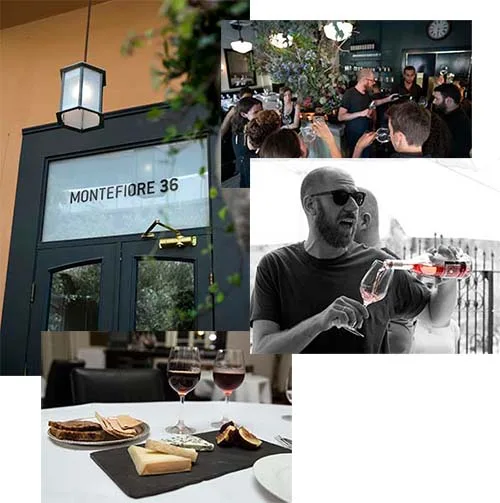
When I visit restaurants, I invariably study the wine list, looking for balance. It has to match the restaurant in style, size and price. I want to see a list that caters for all and that challenges and entices. Wine is an integral part of a good restaurant, but it does not have to be more than that. The difference between being merely interesting and providing good service to showing off in a pretentious way, is not so great. Wine may often be the focal point of what is best and worst in any restaurant. Balance and suitability is the key. I always value those that take wine seriously, but in the right context, which brings me to R2M.
My introduction to R2M was Coffee Bar. It swiftly became one of my favorite restaurants in Israel maintaining standards year in year out. Don’t be confused by the name…..or the area where it is situated.
It is a restaurant that understands the theatre of the restaurant business combining hospitality and quality food with fiercely good service. Everything is in the right proportion, but not too much. The menu and wine list are always interesting without being pretentious and the service is always tip top without arrogance. It will never be the absolutely the best quality in Israel, but the overall package gives a fight to any other establishment in Israel. To use a boxing term, it is one of the best pound for pound restaurants in Israel. Opened in 1994, it still maintains a high minimum standard and consistency, which is the envy of its competitors.
My children and I are notoriously ‘hard to please’ customers. We don’t only delight in eating, but also in analyzing and discussing each course, the wines and service, ad nauseum. The dissecting of the whole experience is part of the fun for us. We have all been in this business, so we do admire standards in others. We can drive our dining companions crazy with this obsession, sometimes even other family members, including my late wife. “Don’t talk about it….just eat” they would say. I digress simply to make the point I am pretty demanding, but even so, it is pretty difficult to leave Coffee Bar without positive feelings.
R2M is arguably the number one restaurant group in Israel. Apart from Coffee Bar, they own other outlets which are close to the best of their type in Israel. There is the Montefiore Hotel (great name by the way!), a pioneering boutique hotel in Israel; Then The Brasserie, a 24/7 operation which imports the French brasserie style as if directly from Paris; The Bakery, the place where you can spoil yourself with something delicious and fattening; Rothschild 12,a hip bar where music and hospitality combine; Finally Delicatessen, where you can enjoy one of the best breakfasts in the city or purchase some of the quality ingredients that make the group what it is. No outlet replicates the other. Each venue is a totally different concept, but each has set the standards for others to try and emulate.
However I write about wine not restaurants and it is their attitude to wine which I respect so much. The wine selection and style of wine list at every venue matches the concept and price, and the variety available is as up to date as tomorrow. The choice reflects both the needs and perception of the customers. They are not wines lists solely to impress but also fit seamlessly into the objectives and theme of the restaurant.
Now there are no famous sommeliers serving these wines. Wine service is done by the servicing waiter. It is all about efficiency and hospitality, but this is not to imply wine service is not of a high standard at all levels. However R2M is built on service not just for the sake of it or to draw attention to themselves. They don’t aim to be pretentious because they can justify higher prices. No, the service is inbuilt in the culture in order to enhance the overall dining experience.
The R2M Group does not have superstars, or PR companies pumping out press releases. The owners and chefs are remarkably low key. The outlet is the brand. However the person in charge of beverages is a kind of superstar.
I am referring to Elad Shoham. He is lean and lanky, balding with a newish ginger beard and a permanent quizzical look. Once I was served by him at the Montefiore Hotel, and no doubt he has the languid, fluid, economy of movement of someone born to give service. Those who are gifted, glide unobtrusively. Do you remember Muhammed Ali floating like a butterfly or have you ever watched Roger Federer’s footwork If you have admired them, you will know what I mean.
I remember the first great restaurants I visited were Le Manoir aux Quatre Saisons in England, Trotters in the USA and Les Crayères in France. The difference between these cathedrals of gastronomy and all the other good & successful places was an elevated, almost uncanny level of service. In Israel I often think the food reaches high international standards, but the overall dining experience falls down on service issues.
Now, Elad Shoham is someone who his hyper active and likes doing. He can barely sit still long enough to speak to me. He is fidgeting, desperate to get back to the action. He tells me he started at McDonalds as a 15 year old. This was his entry into the pressure cooker of food service. His introduction to fine dining which changed his outlook and gave him his career, was at Aioli Restaurant. There the foodie in him came out. The world of fine wine and the culinary possibilities opened a window in his mind. At the same time he did everything and anything in the kitchen or on the floor, just to soak up the knowledge and atmosphere of the restaurant business.
At this stage he was not sure whether he wanted to be in the kitchen, but he began to be entranced by the world of bars, cocktails and wines
Then he joined the R2M and developed along with the group. He was part of the kitchen staff of Hotel Montefiore for a while and floor manager of the Coffee Bar. Eventually the theatre of the restaurant floor, contact with the customer and buzz of service won the day and wine became his new passion. He had the urge to taste, learn about wine, visit wineries, meet winemakers and develop his knowledge. He eventually became the sommelier of the Hotel Montefiore, then wine manager for the group and more recently was put in charge of all Beverages too.
The wine list at Hotel Montefiore maybe is not as grand or as long as some. Awards were recently awarded to The Norman Hotel for the best wine list in the country and to Toto Restaurant for the best range of wines by the glass. Chloelys Restaurant received the prize for the best cellar and King David Hotel’s La Regence was given the award for the best kosher wine list. However, no wine lover will complain about the choice, range, price or service of wine at Montefiore. The oligarch looking for the expensive wine, or business lunch customer looking for wine by the glass, will be satisfied. It is one of the outstanding wine venues in Tel Aviv. At the other end of the scale, Delicatessen lists interesting wines at great value prices to purchase.
Apart from the wine selection and variety by bottle, glass and magnum, there are three other reasons why I single out R2M has having an enviable wine program. Firstly the level of wine service is very good and staff knowledge his high. This shows an excellent and ongoing wine training with tastings thrown in.
Secondly, there are very few restaurants that have the budgets to buy wines for long term aging. Everything is immediate. Wine lists change by the day and the days of the telephone book sized wine list is disappearing. Yet, visit Hotel Montefiore and you have the opportunity to buy different mini verticals (different vintages) of Castel Grand Vin, Clos de Gat Ayalon, Flam Noble, Margalit Cabernet Sauvignon and Yatir Forest. This is virtually unique because the restaurant has to buy wine and store it for the future. In today’s restaurant world, fewer and fewer restaurants are prepared to do this.
Then there is Haruzim. This is the house wine of the group. Most restaurants searching for a house wine would select something off the shelf and slap a special personalized label on the bottle. Those with higher standards would go to the trouble to taste existing wines and choose their own blend. You would think the energizer bunny of sommeliers would choose the easier route because it is quicker. No, R2M is different. They choose the fruit from the vineyard, make their own red, white and rosé wine at the Soreq Winery Wine School. They then age it, blend it and the wine experts at each particular outlet will sit together and democratically select the final restaurant wine.
It is typical of R2M, to take the longest, most painstaking route to produce the entry level wine. Talking about caring about ingredients and success through people. It is because of this approach and the investment cellar that the group caught my eye from a wine point of you.
So what is the secret Elad Shoham is not a shrinking violet and has bundles of self-confidence. He is knowledgeable yet curious and dynamic, and most significantly he has the absolute backing of the R2M management. A recipe for success. Visiting any R2M outlet is a delight for the wine lover and connoisseur. Bravo!

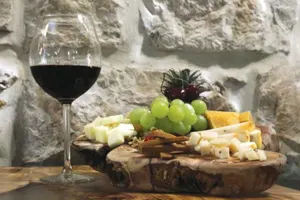
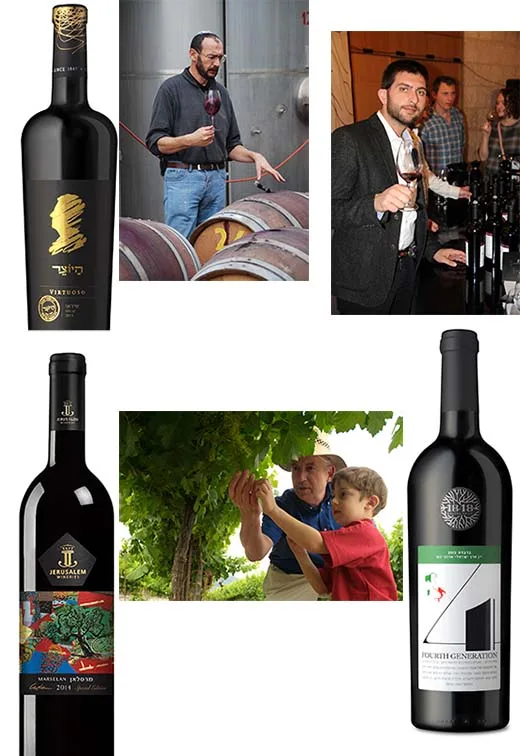
If the 1980’s heralded the birth of the quality revolution in Israeli wine, and the 1990’s the development of boutique wineries, the first decade of the 2000’s has witnessed the revival of the historic & traditional wineries of Israel. Large wineries have responded to the industry’s advances by rejuvenating themselves. These famous wineries, part of the history of Israel, are today, without exception, making some pretty good wines. Quality is the new name of the game and in the competitive wine industry of today, wineries have no alternative but to sink or swim.
The change began with a newly expressed wish to reduce the dependence on kiddush wine and grape juice. This is what I call liquid religion. However they not only expressed the desire to focus more on table wine, but they were also determined to go for quality.
Internationally trained winemakers were employed, new wineries built, existing wineries refurbished and for the first time ever, these wineries started to focus on their vineyards in a more serious way realizing that quality wineries ‘grow wine’ and not grapes. The most visual result of the change, was the new names that were introduced. Carmel Mizrahi, Eliaz, Efrat and Askalon, were consigned to the dustbin of history, to be replaced by the names we are familiar with today such as Carmel Winery, Binyamina, Teperberg and Segal.
The original names are important, because they are a reminder that the modern Israeli wine industry did not begin in the 1980’s. Yet the advances these wineries have made in the 2000’s, has shown that it is not only the new & boutique wineries that can produce quality wine.
More recently three more wineries, deeply imbedded in the liquid religion market, have also began their own revolutions. They are: Arza, Jerusalem and Zion. These are big wineries, comfortably in the list of the top ten largest in the country.
Arza is a winery founded by the Shor family in 1847/8. It was the first recorded winery in Israel, though in those days it was a tiny, domestic winery specializing in sweet wines for a religious market. The miracle is that 170 years later the Shor family still exists and is still making wine. As the family has grown, they have split into three separate wineries, all situated in the same street of Mishor Adumim.
Arza is managed by Moti Shor, the seventh generation. They are a large operation specializing in grape juice, Kiddush wine and inexpensive supermarket wines. Yet they have decided to break away from the traditional image by forming a new boutique winery called Ha’Yotzer. They appointed an internationally trained winemaker and a new CEO to lead the new winery to the promised land.
The winemaker Philippe Lichtenstein is tall, bespectacled, born in France and studied in Montpelier. He has a thick French accent, which is an asset to anyone in the wine trade. But he is also a very good winemaker with an excellent palate. He is best known for being winemaker and later manager of the Zichron Ya’acov Wine Cellars.
His story, of bringing the tastes and flavors of Provence to the hills of Jerusalem, has been adopted by the winery and the name of the winery itself, (author or creator), reflects on the importance they place on their winemaker.
The wines with brand names like Bereshit, Virtuoso, Lyrika, come in quite a flashy presentation that certainly stands out from the shelf. The labels feature a silhouette, not dissimilar to Opus One, one of the most famous and iconic wine labels.
The Jerusalem Wineries situated in Atarot, northern Jerusalem, is another undergoing a kind of quality renaissance. Founded in 1976, also by a member of the Shor family, it was acquired by the Guetta family in 2006. They ploughed the same furrow as Arza, but have decided to invest in quality. They appointed a new CEO, Col. Erez Weiner, who was better known as senior aide to the Chief of Staff of the IDF, Gaby Ashkenazi, and a new winemaker, Sam Soroka, one of Israel’s finest.
Weiner, (what a great name for someone in the wine trade!), is an impressive figure. Calm, authorative and frightfully organized, he has taken to wine like a duck to water. A bottling crisis must be insignificant to the sort of situation he is used to. He seems to relish the sheer variety of the job which takes in the agricultural aspect in the vineyard, production at the winery, and marketing and sales throughout Israel and overseas.
Sam Soroka must be one of the most experienced winemakers in Israel. He studied wine in Adelaide and has made wine in Australia, California, Canada, France and Israel. He first came here in 2003, worked for Carmel and then Mony. He is also consultant winemaker to Montefiore Winery. Ever the artist, he has certainly become known for making award winning wines at these three wineries.
Jerusalem Wineries celebrates being the only winery within Jerusalem by having a series of wines identified by significant dates of winemaking history using the Jewish calendar. So you will find wines named 2900, 3400, 4990 and 5600. Innovative, even interesting for the wine historian, but slightly complicated. Their new look artist collection labels are brighter and easier to like. Some of the wines are already good and this is a fast improving winery to be watched.
The last winery to have a makeover is the Zion Winery. This is another branch of the Shor family situated in Mishor Adumim, also managed by the seventh generation. In this instance, it is Moshe Shor who is steering the new direction. What they have done quite frankly blew me away. They have made enormous changes, largely unseen, all to the end of investing in quality. They have refurbished the winery totally, introducing the latest technology and the winery is spotless. This is the example for any winery wanting a makeover, but thinking they can cut corners. Others should take heed. Changing a label and a introducing a new name alone is not enough.
However they have done that too. A few years ago they introduced a small winery called 1848 for their new quality table wines. Each label represents a different generation, and the boutique winery is the brainwork of the dynamic Yossi Shor, the eighth generation. The wines are beginning to receive the credit their investment deserves, and more plaudits are most likely on the way.
The three wineries are in the process of making changes. They have all decided on the quality route. Don’t be put off by the confusing nature of their labels, something they share. However, the wines are good and most are very reasonably priced. Farewell liquid religion; Welcome quality and value!
Adam Montefiore has been advancing Israeli wines for over 30 years. He is known as ‘the ambassador of Israeli wine’ and the ‘English voice of Israeli wine’.
Out of the wines I tasted, my favorites were:
Ha’Yotzer Virtuoso Shiraz 2013
Fruity, easy drinking with good balance and a satisfying freshness. Good value. PRICE: 50 ILS
Ha’Yotzer Lyrika GSM 2012
A wine made from Grenache, Syrah and Mourvèdre. Aromas of strawberry, raspberry, light in the mouth with a good acidity. PRICE: 80 ILS
Jerusalem Wineries Marselan 2014
A blend of Marselan, with a little Petit Verdot and Merlot. Marselan is a cross between Cabernet Sauvignon and Grenache. It has settled well in Israel. The wine has aromas of bramley fruit, with the oak quite apparent and has a refreshing finish. The label features a painting by David Gerstein. It is part of a limited edition offer of four wines. PRICE: 55 ILS
Jerusalem Wineries 4990 Petite Sirah 2013
Perfumed aroma of violets, with sweet ripe fruit, wrapped in vanilla with a long finish. Good wine. PRICE: 75 ILS
1848 Winery Fourth Generation Barbera 2013
Fresh nose of wild berries and cherries, lively flavor, with a surprisingly tannic finish. Best served lightly chilled. PRICE: 85 ILS
1848 Winery Seventh Generation Merlot 2011
Made mainly from Merlot with a little Syrah & Petite Sirah, the wine has delicate aromas of plum and blackberries and a rounded flavor with a long finsh. A fine wine. PRICE: 120 ILS
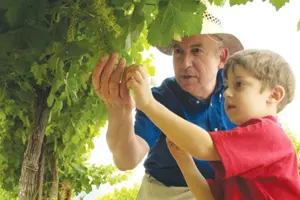
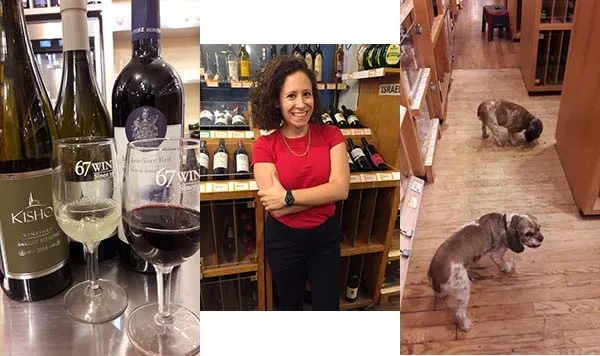
67 Wine is one of the iconic wine and spirit stores in Manhattan. It was founded in 1941 by Joel Weiser and it is still a family owned business. His son owns it today. There is an inventory of over 8,000 bottles. They have a first class selection of aged and current wines, a well-oiled site for internet sales www.67wine.com<span style=”vertical-align: bottom;”> (http://www.67wine.com)</span> and a very efficient distribution service. There are two floors of good value wines mingling with the jewels. At one end of the upstairs section there is a super new stainless steel tasting table with a spittoon and ice bucket built in. An impressive operation, however it is as a retailer of Israeli wines that they caught my interest.
It is one of the first liquor stores in the city, to create an Israeli section separate from the Kosher wine section. So whilst the Kosher wines can be found downstairs, of course along with a good selection of Israeli kosher wines, the non-kosher Israeli wines may be found in the more generously spaced upstairs, in its own section.
I always believe that the Israeli brand should stand on its own, whether kosher or not kosher. Kosher is not a country and Israel is not an island, so our true place must be be alongside the wines of the Eastern Mediterranean countries like Greece, Cyprus, Lebanon and Turkey on both wine lists in a restaurant and on the shelves of wine shops. You can add to that North Africa, if Moroccan or Tunisian wine is present and even the Middle East, if Syrian and Jordanese wine are listed. Don’t mock, they all have good wines, but realistically we are talking about the Eastern Med countries, and in particular Greece, Lebanon and Israel. To me that makes a fascinating region, with the history of the birth of wine culture in its midst.
The Israeli wines at 67 Wine are situated next to Californian Merlots for some unfathomable reason, instead of being part of their region. However Liquor stores in New York City are notorious for a lack of space. They are not that big and suffer from enormous inventory. This is undoubtedly the reason.
However as a symbol and an example to other stores, 67 Wine should be frequented, praised and encouraged for it is at the forefront of a change in the way Israeli wines are marketed in this top heavy kosher wine market economy. Despite the advances of Israeli wine, it has been well-nigh impossible to get out of the Kosher section, especially in East Coast America where the Kosher consumer is so dominant. The Kosher section is normally at the back of the store by the toilets or rest room and the quality table wines often mingle with Kiddush wines like Manischewitz, Mogen Dovid and Kedem. Over fifty percent of Israeli exports go to America. It is the country not only with the most sales and but also with the most potential for future, incremental sales. However Israeli wine is submerged by Kosher which kind of defines our image.
However, now 67 Wine believes Israel should be considered like every wine producing country.
The person, or rather the pioneer, responsible for this change is Sadie Flateman. Curly, frizzy haired, with large bright, intelligent eyes and a shy smile, she is the modest and quiet buyer of wines from Portugal, the Loire, Beaujolais, Californian Whites and Merlot, Sake and dessert wines…and Israel of course. With a B.A. in Art History and past experience in Art Marketing, Production and Curation, she now has a B in her bonnet about advancing Brand Israel and making Israel known as a wine producing country like any other.
She is professional and well qualified. She has earned The Sommelier Society of America Certification Diploma and the WSET (Wine & Spirit Education Trust) Level 3 Award in Wines and Spirits. She is also a certified Sake Specialist. The specialist buyer in 67 is also a marketer and seller as she works seamlessly with the other experts on the floor. I noticed no customer waited long and the expertise in this store is thorough yet modestly used. The knowledge here is well above the Manhattan norm. Sadie puts it well: “I am honored to be a Buyer at one of New York’s oldest and most historic wine shops. It is a privilege to be in the presence of this caliber of wine professionals and customers, who teach me so much daily.”
This slight, rather delicate looking woman must have steel running through her veins. She recently went a step further. She organized an Israeli Wine Symposium, which was three years in the planning. She visited Israel, talking up her unlikely dream, but this impressive lady, through passion and determination, not through a position of authority or with any budgets to speak of, made it happen. She persuaded the Temple Emanu-El Skirball Center to host it. In short no less than 300 people purchased the tickets and attended the symposium. First there was a lecture and presentation. Then eleven importers of Israeli wines offered tastings from over fifty wineries. What was particularly notable, it was an occasion when specialist kosher importers mixed with general market wine importers and kosher wines intermingled with non-kosher wines. As such it was a unique event. It was totally Sadie’s initiative and it was only her drive and determination that made the event a success.
When one meets Sadie one begins to understand. Her love of art, production and curating comes together at the table. She is a real foodie. She fell in love with Slow Food concept at the age of 17 years old. Eating out with her parents was part of growing up. She really sees the food and wine business as an art form with their enjoyment as a kind of production offering entertainment. She loves to educate, inform and elevate the wine drinking experience.
It was only in 2011 that she began to work at 67 because she wanted a job. She only took on Californian Merlot and the Kosher section because no-one else wanted them. By 2014 she was moving Israel out of the Kosher section. When she visited Israel for the first time she visited twenty five wineries. This is not a lady that does things by halves. She paid her respects to the Golan Heights Winery “where it all started” and particularly loved the quirky, edgy, more individualistic wineries, like Clos de Gat and Shvo.
She returned frustrated at how Israel sold itself in America and wanted to create change. In her words she “decided to do something and be a bridge.” And she did. Now she is already planning the next step.
Brand Israel is critical to the advance of Israeli wine. The word itself is more important than Yarden, Carmel, Castel or any individual winery name. This calls for more support from those government and wine authorities with budgets and for the wineries to put aside ego and self interest, to work together for the greater good. Israeli wine is such a positive ambassador for Israel…and you can’t give a bottle of hi tec as a present. However wine organization here, is dysfunctional, to say the least. All the positive developments so far have been individual winery led. So until we get our act together, we need to support the Sadie Flatemans of this world. They can teach us how it is done.
As an afterthought, I can’t resist passing on another tidbit about the 67 Store, which tickled and amused me. Apart from the professionalism and the smoothness of the 67 operation, my favorite part of the store is the sign outside saying dogs are welcome. If they come in they will get a treat. When you enter the store, you see why. Two small dogs are resident in the store and run the roost. In fact I believe they are the true managers. If you visit, Mookie and Shay may not be able recommend the best Cru Beaujolais, but they will definitely provide a warm welcome and a wag.

Wherever the soil is poor and unfertile throughout the Mediterranean basin and the Levant, vines and olive trees have always been planted. They both thrive where other trees and crops don’t grow. The vine and olive tree have a rugged beauty that is as old as time. Yet their fruits, the humble grape and olive, produce super enhanced products, which people thought were gifts from the Gods in ancient times. I am referring to wine and olive oil.
Many Jewish festivals have wine associated with them which certainly helps when struggling to think of an article for the next deadline. When arriving at Hannuka, it was a difficult decision. I feel moved to write about hearty red wines because we are in December, but the weather just does not feel wintery. Instead, I have chosen to write about the product, which is at the center of the Hannuka story. I am referring to olive oil.
I believe it is appropriate for olive oil to appear in a wine article because they are partners and go together like salt and pepper or humus and tehina. They grow together as olive trees and vines in the same climate and conditions, are cultivated in olive groves and vineyards in the same growing regions and later appear on the same table together as olive oil and wine.
Olive oil and wine go back to the very dawn of the Jewish people in Israel. Deuteronomy refers to a land of olive oil and wine. Thucydides wrote that man became civilized when he began to cultivate the olive tree and vine. Today, they together they are the best expression of the Mediterranean diet, and are symbols of the new quality Israeli cuisine. The wine and olive oil quality revolutions in Israel were forerunners and are now standard bearers of the culinary revolution here.
I never forget when I was a young wine buyer in England, a famous Italian winery wanted to give a gift. I was rather hoping for one of the winery’s better wines, but instead was surprised to receive a bottle of their finest olive oil. Only later when I came to Israel and began to appreciate the wonders of olive oil, did I truly appreciate what a special and personal gift it was. I learnt that the pride in a handcrafted olive oil was no less than in a great wine.
The olive was first cultivated in the Levant and Crete virtually simultaneously. From its roots in the areas of Syria, Israel & Lebanon, olive cultivation spread to Turkey, Arabia, North Africa and Spain. The Hebrew word for olive is Zayit, which is similar and the obvious root to the Aramaic Zaita, Arabic Zait, Armenian Dzita, North African Zeit and Spanish & Portuguese Azeite. Those countries using the word olive, trace their roots to Greece, not to the Levant.
The olive tree grew wild in the natural forests of ancient Israel. Olive oil, like wine, was an important commodity for trade & export. There is evidence that olive oil from Canaan was exported to Egypt and Greece over 4,000 years ago. In ancient Israel, olive oil was used for food, cooking, medicine, illumination, cleanliness, cosmetics and for anointing kings or priests during their consecration.
Archaeologists have found a wealth of information from ancient oil presses, storage jars and weights found throughout the country. It is in Israel that the earliest mortars for crushing olives and the oldest surviving vestiges of olive wood were discovered. In the Lower Galilee, they recently found residue of olive oil in clay pots dating back a mere 8,000 years!
The most complete olive oil production center was at Ekron, the Philistine capital, where 114 large olive oil presses were excavated, clearly indicating the size of the olive oil industry in ancient times.
In the Israel of today there are place names evoking the importance of the olive: Beit Zayit, Har Zayitim – The Mount of Olives and Garden of Gethsemane (Gat Shemen – an oil press) are the most famous of these. Even the emblem of the modern state of Israel depicts a menora (an oil lamp candelabra), which in ancient times was lit using olive oil as fuel, with a relief of an olive branch and leaves on both sides.
The Israeli Arab population has always grown olives for food and oil, but in the last 25 years with the development of Israeli food & wine culture, there has been enormous growth in the interest & quality of Israeli olive oil. Today the olive industry really symbolizes Israel because every community, whether Jews, Arabs, Druse or Circassians, are involved in the cultivation of olives.
Israel has a Mediterranean climate, so much of the country is suitable for the cultivation of olive trees. Olive groves cover Israel from the mountains of the Galilee to Revivim & even Neot Smadar in the Negev and from the coast in the west to the hills of the east.
The biggest concentration of olive groves still lies in the Galilee, northern Israel. The Lower & Western Galilee are arguably the most famous areas for olive production. However the valleys surrounding Mount Carmel, the Sharon Plain, the Golan Heights, Judean Hills and central Negev are all now sites for the production of quality olive oil.
Unlike wine, where most of the grape varieties are international, even global, the olive varieties are more indigenous. The Souri, which is sometimes referred to as the Suri or Syrian olive, is the main local variety, particularly popular in the Galilee. It is one of the oldest varieties in the world – thought to have originated in the Lebanese town of Sur (Tyre). It is a small, oval olive producing an aromatic, piquant olive oil, which is green, peppery with a hint of honey.
Barnea is a variety developed in Israel by Professor Shimon Lavie. It has become an international variety planted in Australia & Argentina. This small, oblong olive is easy to grow, providing good yields and can be planted densely. It produces a sweeter, delicate olive oil with a light fruity taste and an aroma of mown hay.
The Nabali Baladi originated in Nablus. The improved Baladi, known as Mohsan, was introduced to Israel from the Arabs of West Bank after 1967. A larger olive than the Souri, it is easier to cultivate, and gives good yields. It is more neutral than the Souri & Barnea.
Apart from these, there a host of international varieties are also grown in Israel. These include Manzanilla and Picual from Spain, Novo & Leccino from Italy, Fishulin from France and Kalamata from Greece, and many others.
Strict quality controls are maintained by the Israel Olives Board. Only olive oils which pass their stringent tests are able use the special sticker for ‘Quality Approved Israeli Olive Oil’.
Olive oils are tasted in a similar way to wine. The reverence is the same and the vocabulary is similar. The vagaries of the climate, choice of variety and date of harvesting can affect the final product, just like wine and olive oil should be stored in a cool dark place, which is exactly how wine should be stored.
Olive oil is so central to the Mediterranean diet that it is no surprise that it should strongly feature in an Eastern Mediterranean country like Israel. Israelis love to cook with olive oil. A fresh fish is likely to be grilled with only fresh herbs & olive oil added. In the quality restaurants, olive oil is used to enhance carpacchio or simply drizzled onto bread. A small dish of olive oil may appear on the table in place of butter. At home it will be enjoyed with humus or labane. Pita bread dipped in olive oil and za’ater, the herb of Israel, is a popular breakfast in the region.
On salads, Israelis will add olive oil, lemon juice & parsley, instead of the traditional European salad dressing of oil & vinegar. Whereas in the southern Mediterranean the custom is to use olives in the cooking, in the eastern Mediterranean, olives are presented as a starter or as part of a mezze served on a number of small plates in the center of the table. In its love of olive oil & olives, Israel is no different from other countries in the Eastern Mediterranean, like Greece & Turkey.
Israeli olive oils are considered to be more aromatic, characterful & strongly flavored, than the more delicate European olive oils. For a more authentic Hannuka experience this year, why don’t you light your Hannukia with olive oil this year Of course, as with all festivals, there should always be a glass of wine nearby!
Never forget that wine and olive oil grown and produced in the land of Israel, are the essence of modern Israel. Yet they are perhaps the only products that also connect us, as if by a thread, to our forefathers in ancient and Biblical times, when these two elixirs were revered, maybe even more than today.
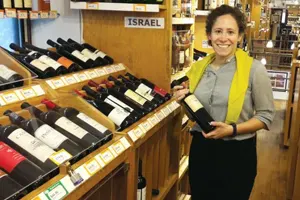
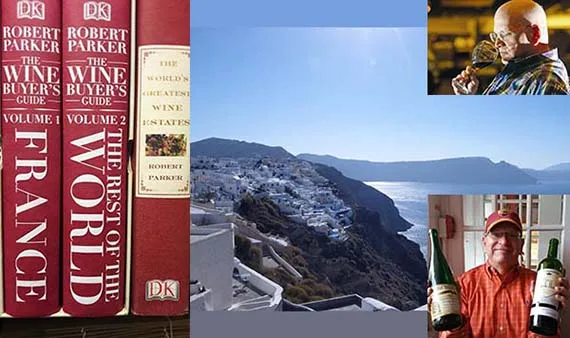
Robert Parker, a young, humble lawyer from Monkton, Maryland, was a wine lover. He began tasting wines, writing tasting notes and publishing them for a small data base of followers. No different to many wine bloggers today. He called his newsletter The Wine Advocate. That was in the late 1970’s. He became the most powerful and influential critic the wine world has ever seen.
He received his big breakthrough with the 1982 vintage of Bordeaux. Many frowned at the quality of the wines that year. However Robert Parker, brisling with confidence in his tasting ability, stood firm that it was one of the great vintages. When he was proved right, the legend was born.
He saw himself as an honest, crusading critic representing what was in the glass, breaking through the waffle exhibited by the pin stripe suited and tweed jacket brigade of mainly British experts at the time.
He worked very hard, had a phenomenal palate and indestructible memory. These combined with the needs of the time to create an aura of invincibility. He introduced the 100 point score which has been adopted almost worldwide. As a wine writer, I don’t like scores for wines. I think it is too finite for an art form that is constantly changing. However as a veteran of the wine trade, I soon change my view. A good score and I am crowing as much as anyone. As for the consumers, they loved it. It made things so much simpler. A score of 90 points could make a wine, with it selling out within weeks. A score of 89, and it would continue to languish on the shelves. Some wineries even adapted how they made wine in an attempt to achieve a higher score. That was the measure of this man’s influence on wine in the last thirty years.
In the mid 1990’s I worked for the Golan Heights Winery and thought it was strange that he had not tasted Israeli wines. I thought complacently, that if he tasted any, he should start with Yarden.
So, no less than four times I sent wines to him for tasting. The first two times, I heard nothing more. Israel was just not on the horizon in the mid-nineties. The third time I sent the wines, I telephoned to check they had arrived. The phone rang and at the other end someone answered “Robert Parker speaking.” The great man answered himself. Still though, the wines were not tasted or at least the scores or tasting notes were not published anywhere.
The fourth time, the Golan Heights representative in the USA, who was then Brad Haskell, tasted the wines with Pierre Rovani, then Parker’s assistant. He was courteous, complimentary, and our hopes were high, but nothing came out of it.
Roll on to 2007, a pusher named Hezi Levy from Chicago met Robert Parker at some event, and bemoaned the fact that Israeli wines had never been scored. Parker gave a commitment that he would arrange a tasting and he gave the job to Mark Squires, one of his elite tasting team.
The results are history. Squires tasted approximately 100 wines. The tasting was published in the Wine Advocate of December 2007. Yatir Forest then became the first Israeli, Eastern Mediterranean or Kosher wine to score 93 points. It created a great deal of excitement in Israeli wine circles. By then I was working for Yatir Winery, and without doubt this score made the winery’s name.
When Robert Parker’s 7th Wine Buyer’s Guide was published, Israel was an impressive newcomer with nine pages, the same space that New Zealand received, and more than South Africa.
Mark Squires goes further back with Robert Parker than everyone else in his tasting team. He actually met Parker over 25 years ago on the Prodigy wine forum, where he was the board leader and Parker was the paid expert. When that collapsed, Squires started his own site. Later, when Parker started his own, he invited Squires to bring his forum on board in 2001.
The chat forum was always fun, informative and picante. Squires often received a tough press for this, but it was an impossible job and he managed it very well as social media changed, developed and became more independent and opinionated. Then in 2006 Mark Squires was brought into the tasting team. He became responsible for Israel, Greece, Lebanon, and Portugal amongst other countries.
Mark Squires lives in Philadelphia. He was also a lawyer, who became enchanted with wine, which took over his life. Bald, bespectacled, with a round, genial and generous face, he is sharp witted, fiercely intelligent and does not suffer fools gladly. He has a personality beyond wine though. He can talk just as passionately about politics, history or photography.
He visited Israel and toured the wineries, saw the whites of the eyes of the winemakers, and the differences between the various regions. I hosted him at Carmel Winery at Zichron Ya’acov and Yatir Winery at Tel Arad. Originally there was to be one tasting of Israeli wines a year, but this very soon became more because of the number of wines he received. From 2007 until today that has been a lot of wines!
I will say two things to Mark Squires’ credit. Firstly his tasting notes are beautifully written and you really feel when reading them that you get into the essence of the wine. Secondly he is one of the very few critics who taste over a couple of days. Indeed the Yatir wine that did so well, only achieved that score because it had improved so much the next day. I remember seeing a film of the legendary English wine expert Michael Broadbent MW, of Decanter and Christie’s fame, tasting with a stop watch in front of him and returning to a wine every half an hour. Well whereas most wines are tasted (and scored) with a sniff and shluk (Israeli slang for a taste), before hurriedly moving onto the next one, it seems wholly appropriate to give this complicated beverage time to show itself.
By the sheer weight and regularity of tastings, Squires must be arguably the number one expert on Israeli wines today. We no longer have our own Daniel Rogov, the critic who passed away before his time in 2011. Though there are Israeli guides, and even a wine journalist who boldly announced “I am stepping into Rogov’s shoes”, none has yet the international credibility or gravitas to create a standard by which consumers and wineries can check themselves. (And the person who crowned himself the new Rogov no longer writes about wine!)
There are other magazines that taste Israeli wine, but these are not close to the number of wines Squires tastes in a year. Usually the results of their tastings are published just before the holidays emphasizing the kosher niche where Israeli wine is embedded, particularly in America.
Of course the Robert Parker brand is the one known even though there is team of experts that taste most of the wines these days. So even if it is Mark Squires tasting the wine, wineries invariably put the letters RP and the score on shelf talkers in wine stores. Of course Robert Parker is the brand that sells. Though it would be fairer and more honest to admit the tasting was by Mark Squires on behalf of Robert Parker’s Wine Advocate.
So what does Mark Squires think about Israeli wine He has written: “The corner has clearly been turned qualitatively. Israel has a real wine industry that deserves consumer attention. There are attractive wines with typicity and some distinction….Many are classic and charming and the best will impress anyone.”
As a fervent campaigner that Israel is part of the Eastern Mediterranean, I loved his quote: “A wine epicenter that includes countries like Greece, Israel and Lebanon, might look familiar to someone a couple of thousand years old, but it is certainly a new part of the wine world for the rest of us.” It makes clear that Israel is not part of the new or old world of winemaking, but is part of the ancient world.
In the last ten years three Israeli wines have top scored at 94 points. They are the Alexander Amarolo 2011, Clos de Gat Sycra Muscat 2006 and Castel Grand Vin 2013. A further eight wines have scored 93 points (Castel and Margalit wines twice each; and one each made by Alexander, Flam, Yarden and Yatir). Let’s hope that Mark Squires & Robert Parker’s Wine Advocate will continue to taste Israeli wine. Who knows We may even one day break the glass ceiling and receive 95 points!

Israel, like many long thin countries, has a surprising number of microclimates. It is possible to ski in the morning on Mount Hermon in the north, and in the afternoon to go scuba diving to see the Coral Reef in the Red Sea resort of Eilat. Likewise it is possible to be in the central mountains at 1,000 meters altitude, and a short time afterward to fall away to the Judean Desert, where the Dead Sea, the lowest point on earth at 400 meters below sea level, is situated. One can visit the hot, humid Sea of Galilee, where you will be surrounded by date palms and banana trees. Climb ten minutes on to the Golan Heights and cool climate produce like apples, pears and wine grapes are grown. It is a country of variety, extremes, but all on a small scale. Israel would comfortably fit into Wales or New Jersey
The official Israeli wine regions were decided in the 1960’s long before the Israel wine industry took its current shape. The country is divided into five regions; Galilee, Shomron, Samson, Judean Hills and the Negev. There are ongoing talks to change and update these to fit in with the realities of today, but until the decisions are made, these remain the regions registered by the TTB in America and the European Community. The Shomron and Samson areas are the traditional wine regions of Israel. These are coastal regions where the bulk of vineyards were originally planted and they formed the basis of Israeli wine for a hundred years or so. With the quality revolution, new vineyards were planted in the cooler areas of the Golan Heights, Upper Galilee, Judean Foothills and Judean Hills. These are proving to be Israel’s best quality wine producing areas, where most of the new vineyards are being planted.
Galilee – The Galilee, Galil in Hebrew, is the best appellation, situated in the north of Israel. This comprises Israel’s two finest quality wine growing regions, the Upper Galilee and the Golan Heights. These are high altitude, cooler climate vineyards planted comparatively recently. The Golan Heights is really a different geographical region to the Galilee – but in wine law, it is registered as a sub region of the Galilee.
The Upper Galilee is a mountainous area of forests, plunging peaks and stony ridges. It is Israel’s most beautiful vineyard region. The soils are heavy, but well drained. They tend to be a mixture of volcanic, gravel and terra rossa soils. The Kedesh Valley, Naftali and Dishon vineyard areas are 350 to 450 meters above sea level. They are close to the northern border with Lebanon, not so far from the Bekaa Valley, the heart of the Lebanese wine industry. The vineyards of Kayoumi, Kadita, Ramat Dalton and Ben Zimra, nearer Mount Meron, range from 650 to 1,000 meters above sea level. Most of the vineyards in the Upper Galilee were planted only since the mid to late 1990’s. The annual precipitation in the Upper Galilee (and Golan) is from 800-1,000 mm. Winter temperatures can be from 0-15 0C whilst in the summer the range is from 12-30 0C.
The main wineries in the Upper Galilee are Galil Mountain, Dalton and Adir, and Carmel’s Kayoumi Winery.
The area of vineyards in the Lower Galilee is situated at Kfar Tabor, near Mount Tabor. Here elevations are 200 to 400 meters. Soils vary between volcanic and limestone. Precipitation ranges from 400 – 500 mm a year. Tabor Winery is the main winery of this area. However, only just over 10% of the Galilee’s vineyards lie in the Lower Galilee.
The Golan Heights is a volcanic plateau rising to 1,200 meters above sea level. The area benefits from cool breezes from the snow covered Mount Hermon. The area may be divided into three: The southern Golan overlooking the Sea of Galilee is 350 meters above sea level. The soils are basaltic clay. The middle Golan is 400 – 500 meters altitude. Then there is the Upper Golan which rises from 750 to 1,200 meters. Soil is more volcanic tuff and basalt. The Golan was first planted with in 1976, but in the 1990’s became a major wine growing region in volume not just quality.
The main winery situated on the Golan is the Golan Heights Winery, situated at Katzrin. Other prominent local wineries are Chateau Golan, Pelter, Bazelet Hagolan and Odem Mountain.
Shomron – Shomron is Israel’s most traditional wine growing region first planted by Baron Edmond de Rothschild in the 1880’s. Mount Carmel, Ramat Manashe and the Shomron Hills are part of the Shomron Region.The main concentration of vineyards is in the valleys surrounding the winery towns of Zichron Ya’acov and Binyamina, benefiting from the southern Carmel Mountain range and cooling breezes off the Mediterranean Sea. Elevations rise from 0 to 150 meters above sea level. Soils vary from calcareous clay, terra rossa, limestome and chalk. The climate is typically Mediterranean. Annual precipitation is 400 – 600 mm.
The Carmel’s Zichron Ya’acov Wine Cellars, Binyamina, Tishbi and Amphorae wineries are all situated in close proximity.
There are also new vineyards being planted in the central mountain region of the Shomron, known as the Shomron Hills. Here the shallow soils on a limestone base and the high altitude, between 700 to 850 meters, prove ideal for growing wine grapes. The sparse stony hills look very Biblical.
These mainly supply the small wineries nearby like Gvaot, Shilo and Tura.
Samson – Samson is not a geographical place, but the wine region is named after the Biblical figure, that frequented the area.
The central coastal Judean Plain and Judean Lowlands, south east of Tel Aviv, is a large part of the Samson Region, where vineyards were planted in Rothschild’s time. The area is from 0 to 100 meters above sea level and it is a hot, humid region. Summer temperatures range from 20 to 32 0C. Annual precipitation is 350-400mm. Alluvial soils mix with sandy, clay loams. There is also a fair bit of terra rossa. Many of the vineyards for large volume wines come from here.
Wineries in this region include the historic Rishon Le Zion Wine Cellars, Barkan Winery at Hulda, Bravdo at Karmei Yosef and the Latroun Monastery.
The second part of the region is the Judean Foothills, which is the fastest growing region in terms of newly planted vineyards and new start-up wineries. These are the rolling hills with limestone soils and clay loams, which may be experienced on the drive to Jerusalem. Elevations are higher, from 50 to 200 meters above sea level and average rainfall is up to 500 mm a year. Winter temperatures are from 5 to 20 0C, whilst those in the summer range from say 18 to 30 0C.
Wineries in this area include Clos de Gat, Ella Valley, Flam, Mony, Teperberg and Tzora.
Judean Hills – The Judean Hills is a quality but underdeveloped wine region ranging from the mountains north of Jerusalem, through Gush Etzion to Yatir Forest, south of Hebron. Warm days and cool nighttime temperature characterize the region which in places is 500 to 1,000 meters above sea level. The soils are thin, limestone and stony. The higher mountains receive snow in the winter. Annual precipitation is 500 mm. Average winter temperatures are 0-18 0C, whilst summer temperatures can rise from 15 to 30 0C.
Psagot, Domaine du Castel, Gush Etzion, Ramat Hebron & Sea Horse wineries are situated in this region.
Negev – The Negev is the desert region that makes up half the country. Vineyards have been planted in the higher areas in the northeast at Ramat Arad, a semi arid area, which is 500 meters above sea level, with annual precipitation of 150 mm. a year. Here the soils are loess.
Yatir Winery and Midbar Winery are situated in the north east Negev.
Also in the central Negev Highlands, in particular Sde Boker and Mitzpe Ramon, where soils are sandy loam. The Negev Highlands range from 700 to 1,000 meters elevation. Rainfall is 50 to 100 mm. a year. Temperatures range from very hot during the day (15-40 0C in the summer) to cooler evenings and cold nights. The vineyards are sometimes shrouded in mists during the morning hours. The dryness and lack of humidity keep diseases to a minimum.
Kadesh Barnea and Carmei Avdat are two of the wineries from the Negev.

Do you know that until the last quarter of the 20th century, woman winemakers were regarded with suspicion. In the Catholic ‘old world’, of France, Italy and Spain, the superstitious wine folk would not allow women to become part of the winemaking process, because it was thought a menstruating woman could make the wine go bad. This lack of respect for the female species lasted far longer in wine than is realized, even in enlightened countries.
The breakthrough in the United States really began forty five years ago, to an extent that the exclusion of women is no longer an issue. In Israel things have taken longer.
Kosher wine producers also disdained woman winemakers for a different reason. They believed in gender separation, so the idea of allowing a woman winemaker to upset the concentration of the orthodox workers was unacceptable and simply unheard of.
They echoed views deeply imbedded in the wine trade throughout the ages. In the great wine cultures of Egypt, Greece and Rome, it was the men that made the wine. In the wine tastings held by the Greeks and the Romans, men drank the wine. Women were only present if needed for alternative entertainment.
In any case, the wine trade for years was very sexist and chauvinistic. Wine tasting and talking about wine is a very man thing based on years of a tradition which in many instances excluded women. Even today most of the wine writers, sommeliers and wine folk are men.
Two new findings made people think again. Firstly, some serious studies proved that women are in fact better tasters than men. They have better natural palates. Secondly came the realization that women purchase most of the wine in supermarkets, which is most of the wine full stop!
There were early cracks in the glass ceiling though. In 1986 Tali Sandowski became the first female winemaker in Israel when she joined the Golan Heights Winery. After gaining her first degree, she relocated to UC Davis, got her winemaking degree and then returned to Israel. She remains at the Golan Winery until today as their longest serving winemaker. In the 1990’s Carmi Lebenstein became the first woman in an executive position when she became Marketing Director of Carmel.
Since the beginning of the 2000’s, four of the largest ten wineries (Carmel, Binyamina, Galil Mountain & Golan Heights) have had woman CEOs, and there have been many woman winemakers like Irit Boxer Shank of Barkan Winery, Orna Chillag of Chillag Winery and Meital Damri of Carmel Winery (ex Midbar). Others like Roni Saslove, Naama Sorkin and Yael Sandler worked at Saslove, Dalton, Saslove and Binyamina wineries respectively before moving on. So the prejudice is just not there anymore. That is not to say that woman winemakers abound! However there are more women in the wine trade than ever before, and not just winemakers, but in a variety of roles. For instance Michal Akerman, the viticulturist of Tabor Winery and Sharona Belogolovsky, the owner & manager of Vitkin Winery. Then there is Ruti Ben Israel, the sommelier who opened Carmel’s Center for Wine Culture, organized the first wine festival for the Mount Carmel region and now is involved with the Shefaya School winery. There are others.
The latest addition to the women wine folk is Nitzan Swersky. She followed a much trod route into wine. She did not have a wine background, but started with a barman’s course, which pricked her curiosity. Then she did a wine course at Haim Gan’s Ish Anavim. At roughly the same time she was sent by Segal Wines on an incentive and learning trip to Sicily and Tuscany. She was hooked!
I first met her when I was on a stand at the Vin Italy Exhibition twelve years ago, showing Carmel wines and Handcrafted Wines of Israel, a consortium of some of Israel’s finest boutique wineries, to the world. She was studying oenology at the University of Milan (after studying Italian) and volunteered to help on the stand. Most young volunteers use an invitation to a wine show to visit as many stands as possible and taste as much as possible, but to avoid anything like hard work. What I remember of Nitzan, was she worked harder than all of us put together, hardly ever leaving the service counter let alone the stand. She was pretty, petite, vivacious and the visitors tasting Israeli wine for the first time loved her perky character.
She completed her studies returned to Israel. Then she travelled to Spain to do a second degree (after studying Spanish….of course!) and then to South Africa to gain experience. There she worked at Mulderbosch Winery, a very fine, well known winery, where she learnt a great deal from Mike Dubrovich, who was a mentor figure for her.
Next time I saw her she was part of the winemaking team at Barkan Winery, who she joined in 2011. Here she worked at what was then Israel’s second largest winery as an associate winemaker. It was an invaluable experience, but was also far removed from the hands on, handcrafted winemaking that she preferred. She decided big winery winemaking was not for her, but still got two harvests there under her belt.
What she did in the meantime was marry and she had a family in super quick time. Now she has four children aged 8, 6, 3 and one year old, so fulfilling the life’s dream of a happy marriage and a house full of children. However she had still not satisfied the wine dream and assuaged the passion to make wine.
In 2014 this busy mum found time to put the nappies and lunch boxes to one side for a few moments to fulfill her dream and make not only a wine, but her own wine.
She called it Ahat (feminine for Ehad, one.) She decided to make a white wine only. Why Because white is ‘in’ and coming back after twenty years of reds dominating the tastings of the wine intelligentsia. I agree with her. White wines are so much more suitable for our hot, humid climate. There is so much more variety in white wines than red, and they go better with food. In this decision she echoed similar decisions by excellent Sphera Winery and the small Zimbalista Winery. I have little sympathy or understanding for the wine snob who says: “I only drink red”, as though to emphasize he is more of a maven because he only drinks the ‘real stuff.’
Nitzan knew she did not want to make wine from more mainstream varieties like Chardonnay and Sauvignon Blanc. So she made a wine which was a blend of Roussanne and Viognier, two reasonably new immigrants to Israel, which are both suitable for the Mediterranean climate. The grapes come from Givat Yeshayahu in the Judean Hills.
Only 2,000 bottles were made of the Ahat White 2014. There is something strikingly individual about the beautiful label in a botanical drawing style. The wine has a nose of grapefruit, and green apple with tropical notes. It coats the mouth. The oak treatment is noticeable but it supports rather than masks the fruit and the wine finishes with a soft but refreshing acidity. The fruit stays with you right through from the first sniff, until the long, balanced finish. It retails at 120 shekels. This is worth buying if you can find it, but it is also a marker that Ahat Winery is one to follow and look out for in the future.
It was interesting to hear that the grape variety she would most like to work with is Chenin Blanc. This is a variety making a comeback here, and some practitioners, like Sea Horse and Shvo Vineyard are making great, but very different Chenin Blancs. It is a wonderfully versatile variety with a great deal of potential here.
She is generous in her praise of winemakers who have helped her. She mentions Yiftach Peretz (Binyamina) and Ido Lewinsohn (Recanati), who were on the same Milan degree course, and then goes on to give credit to Avi Feldstein (Feldstein Winery), Eran Pick MW (Tzora) and Doron Rav Hon (Sphera), in her words “each for something different.”
I can’t help thinking that Nitzan Swersky is wonderful role model. She has learnt her trade, had a family and now makes the most individual and personal expression of a wine that is possible to make. The busy mother, rushed off her feet in the normal day, has found time for wine. She is a an example to young mothers and aspiring winemakers everywhere, and I salute her!
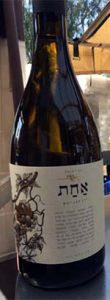
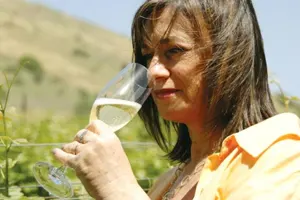
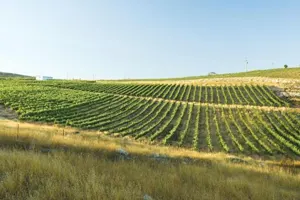

“If we stop here, they will kill us.” So said Vered Ben Sa’adon, as we passed through the last Arab village, before arriving at the Har Bracha vineyard, just south of Nablus. An alarming prospect for someone not used to travelling these roads. At that moment, I felt more like a stiff whisky than a glass of wine.
We arrived at the high altitude vineyard at 850 meters above sea level. It was sparse, stony, and slightly bleak. The expanse of green vineyards was familiar and strangely comforting. There was a feeling of Biblical Israel. It was also quiet. An absolute silence. The only activity, was the of evangelist families who had arrived that morning from America and were already building huts and preparing containers for a period of work and contemplation in the Holy Land.
Har Bracha was a name I knew in a wine context from the early 2000’s. When Carmel Winery began its own mini quality revolution, it released a series of single vineyard wines. One of which was the much praised Har Bracha Merlot 2002. Of course, at the time I worked for Carmel. Now this was a mighty Merlot, one that really wanted to be a Cabernet. It was a tannic, big wine that needed a few years to soften. Even the last time I tasted it, it was still showing its personality.
The name Har Bracha proved too toxic for marketing to the general world and it was dropped, but this one time flash of lightening was enough to encourage the local growers to develop their vineyards.
The people who had sold their precious fruit to Carmel were Erez and Vered Ben Sa’adon. They first planted vines in 1997. On the strength of this success, they expanded their vineyards. Erez studied wine at Tel Hai College and at Ariel and they founded the Erez Winery in 2003. Later the name was later changed to Tura. The winery is situated in Rehelim, which is east of Ariel. There, they have built an attractive and original visitors center with a long tasting table, which just invites you to sit down and have a shluk of wine.
Erez is a grower type, probably happier to be amongst his vines than with people. He is the thinker and stategist who has the drive to implement his dreams. Vered is vivacious, feisty, talkative and enthusiastic. Vered describes it best; She said Erez ‘does’ and she ‘talks’! In fact they are a great team, one complimenting the other.
Vered has a fascinating background. She was born in Holland to a Jewish father and non-Jewish mother. Her grandmother on her mother’s side was engaged to a member of the Gestapo. Anyway to cut a long story short, in the funny way these things happen, the mother eventually came to Israel, converted and her three year old girl was brought up as an orthodox Jewess.
The Ben Sa’adons are growers who also sell their grapes to a number of wineries in Israel, though many will not admit where the grapes come from. They have flirted with all sorts of agriculture including producing honey and olive oil. They also produced a great cider, but now sell their apples on, wanting to concentrate on wine.
Different areas are becoming known in Israel for different varieties. It is unwise to generalize, but maybe the Upper Galilee is Cabernet land. The northern Golan Heights produces the freshest white wines. The Mt Carmel region is best for Carignan, whilst the Judean Hills is excellent for Chardonnay, Syrah and Petite Sirah. In the same vein, it is possible to say that the Samarian Mountains are known for producing some of the finest Merlot in the country. The Tura and Shiloh Merlots are regular prize winners.
Samaria is the northern part of the West Back, otherwise known as ‘The Territories’, or ‘Yehuda and Shomron’. I prefer to describe the region as the Central Mountains which is a non-political way to describe the topography. In fact the same mountain range runs down the spine of the country from Har Bracha or Mount Grizim to Hebron.
Of course mention the word ‘Samaria’ and certain people the world over, termed by some as ‘leftists’, will not touch the wines because they come from Occupied Territory. Even in Tel Aviv the debate is no less vociferous. Many restaurants will not list wines from there.
However, you need not worry for the well-being of the Central Mountain wineries. There are more than enough Jewish communities worldwide, and in Israel too, that may be termed by others as ‘right wing’, who practice reverse discrimination and buy the wine precisely because they come from there. Of course when used in this way, the words ‘right wing’ or ‘leftist’ are pejorative terms, used to convey a feeling of utter disgust by the ‘other’ side of the political equation. Everything is political in Israel, including wine it seems!
Tura is a proud winery first and foremost, but they also consider themselves as ambassadors for the region. Vered Ben Sa’adon is a determined advocate of wines from Central Mountains and is not afraid to call out those, whether journalists, restaurateurs or members of the public, who give their wines a miss. She is almost missionary in her determination to advance the region. Just to reemphasize the point, the words: ‘Wine from the Land of Israel’ is written on every label.
I visited as a wine guy interested in the development of a new wine region in Israel in the exact place where Biblical Israel flourished. A viable wine route has been created with a number of successful wineries and young vineyards planted along the way. The wines are good and getting better. The passion of the farmers and wine growers is immense. To work in wine requires passion. To work the land as pioneers is one sort of passion. To settle the land of Biblical Israel as religious Jews, requires another sort of passion. Together, this is a triple dose. These wine pioneers are not shrinking violets, but they are recreating a wine trade to mimic their forefathers of ancient times.
My own view is that I don’t believe in boycotts, because you either have to boycott everything or nothing. You can’t credibly be a boycotter on one issue only without exhibiting prejudice. On the other hand I believe every restaurant or customer has the right to buy what they want and every journalist has the right to write about which wines they want. It is a free world. I believe in ‘Live & Let live.’ As far as it goes with critics and customers, you win some and lose some. That is the way of the world. Anyway, in my opinion, no Israeli winery suffers lasting damage from boycotts from anywhere. Furthermore, most Israel wine is sold in places where the effect of BDS is zilch. Where there is bad publicity, contrary to the wishes of the boycotters, it normally works to the advantage of the winery or region.
Tura Winery is arguably the most visual representative of the northern Central Mountains. They have three labels. Mountain Vista is their entry level label for bright, up front wines. Mountain Heights is their reserve label and Mountain Peak, their flagship wine. They regularly win awards in both Israeli and international competitions. They use the services of Itai Lahat one of Israel’s best winemaking consultants, which underlines their ambition and professionalism. They have a winery slogan ‘Patience & Inspiration’. I think it is a mistake. It should read: Patience, Inspiration and Passion.
TURA MOUNTAIN VISTA ROSE 2015
Nicely colored pink rose made from Merlot and Cabernet Franc grapes. It is fruity with a touch of sweetness but nonetheless, is very refreshing. Price: 90 ILS
TURA MOUNTAIN VISTA GEWURZTRAMINER 2015.
This will be popular. Fruity with floral notes, with a pleasing sweetness. Price: 90 ILS
TURA MOUNTAIN VISTA HEARTLAND 2014
A blend of Cabernet Sauvignon 67% and Merlot 33%, aged for 12 months in French oak barrels. The wine is rich, spicy and the oak is apparent but in balance. Price: 129 ILS
TURA MOUNTAIN HEIGHTS MERLOT 2013
Rounded, full bodied red with warm berry fruit and plum, with more than a touch of vanilla. The wine is oaky, has soft tannins and good acidity. Long finish. Price: 129 ILS
TURA MOUNTAIN PEAK 2013
This the prestige wine of the winery. It is a Bordeaux style blend of Cabernet Sauvignon, Merlot, Petit Verdot and Cabernet Franc. The wine was aged for 22 months in oak. The result is a full bodied wine with aromas of black currant and blackberry with black cherry, a dominant oak presence which coats the mouth and a long balanced finish. Price 200 ILS

I recently met Haim Spiegel, the Director of Food & Beverage and Procurement at Dan Hotels, one of the stalwarts of the Israel hotel industry. These days, F& B Managers in Israeli hotels seem younger and the job has changed with time. It seems to be more a fire-fighting role than it used to be. F & B Managers can be seen rushing from crisis to crisis wielding big bunches of keys, in order to keep the show on the road. The F& B Manager today seems to be a stop gap before another stepping stone up the greasy ladder. Today F & B, tomorrow Front of House. The old style Food & Beverage Manager, equally at home in the kitchen and wine cellar, with a lifetime’s experience is not only rare but a threatened species.
I say this not to denigrate a whole new generation of F& B enthusiasts, but by way of introduction to Haim Spiegel, We met in a café, but as always, he was dressed immaculately. He always wears a dark suit, usually with a white shirt and always with a tie. If you saw him at the Old Bailey Law Courts he would not be out of place. I have known him for over 25 years. During all that time he has been the address for all things food & beverage in the Dan Hotels, setting and maintaining the standards for their hotels all over the country. I often sometimes feel he is the Food & Beverage guardian for the country, for he is a true master of his craft.
Haim Spiegel is stylish in all he does. An absolute and total perfectionist, he is the ultimate foodie, immersed in the history and folklore of gastronomy, yet as up to date as tomorrow regarding the latest trends. He is quietly spoken, but misses nothing. Rather like the wise owl in children’s books. (Do you remember: “The wise old owl who lived in an oak; the more he saw the less he spoke…”) He is the antithesis to the usual Israeli that knows something. He does not raise his voice to draw attention to himself, but when he does speak it is normally brief, pithy, smart and of value. In other words, worth waiting for. He is a Food & Beverage expert through and through.
He is also pretty sharp on wines too and has played his part in advancing Israeli wines to the outside world. Not for nothing, he is invited year after year to play a crucial part at the annual Eshkol Hazahav (Golden Cluster) Wine Competition, organized by Studio Ben Ami. This is the Oscars of Israeli wine. Haim Spiegel oversees the tasting and the competition to ensure it is held to the highest moral and professional standards and then presents the awards. He is seen as the credible figure to do this important job by the wine industry, being totally above board and with no conflict of interests.
Normally as people become older, or have been around in a job for a while, they tend to become more conservative. Furthermore the hotel world can be as conservative as you can get. So I was surprised, delighted and excited to hear Haim Spiegel’s views on wine service and about his campaign to advance the accessibility, service and sales of wine in Dan Hotels. The Dan Hotels Group is the oldest, most prestigious hotel chain in Israel. It comprises 14 hotels and it is the most recognized name in the Israeli hotel industry.
The whole idea revolves around the idea of creating what Spiegel call ‘Wine Friendly Hotels’. King David is the first, and others such as Dan Tel Aviv, Dan Accadia and Dan Carmel may be next on the agenda. Of course, the King David Hotel is the most famous hotel in Israel and known throughout the world for its rich history.
This pioneering idea was dreamed up and is being implemented by Spiegel. He realizes wine is Israel’s number one ambassador. Today we are more known for Hi Tec, but you can’t give a bottle of Hi Tec as a present. He appreciates that a bottle of wine is prohibitive item to purchase. It is expensive and many people do not want to drink a whole bottle. So he believes that the future is serving wine by the glass.
The focus is on variety, attractive prices, accessibility with helpful, knowledgeable assistance. The grand Oriental Bar of the King David Hotel has been relaunched as a Wine Bar. Wines are carefully chosen to show the finest of Israel as every price point. A number of wines are made available by the glass at attractive prices. A Eurocave dispenser is used to ensure quality is maintained. You don’t have that awful feeling of buying a glass when you don’t know how long the bottle has been open or how it has been kept.
You can purchase by the glass, or in a most praiseworthy innovation, buy smaller glasses in flights of two, three or four wines to sample one against the other, or simply to broaden the tasting experience. Prices by the glass range from 30 to 54 shekels, unheard of in most hotels. The wines by the glass in the Wine Bar are divided in to two categories. There are the ‘Classics’: Carmel Kayoumi Riesling, C Blanc du Castel, Maia Mare Nostrum and the Flam Cabernet Sauvignon Reserve. Then there are Wines of the Month which include the Binyamina Unoaked Chardonnay, the Kishor Savant Riesling, Montefiore Cabernet Sauvignon and Recanati Wild Carignan. The range is chosen to be of interest to the wine expert and to educate the curious. In the other food and beverage areas there are a further six wines by the glass, making fourteen in all.
The King David Wine Bar not only champions Israeli wines, but also Israeli beers and spirits. The hotel lists beers from the Alexander and Herzl boutique breweries and also spirits from the Pelter and Julius artisan distilleries. So if you want to glug the Alexander Blonde or Herzl Dolce De Asal or nose and sip the Pelter Gin or Julius VI Brandy, you can. The bar menu, carefully chosen by celebrated chef David Biton, offers a few snacks to compliment but not dominate the wines
Then comes the product knowledge aspect. The hotel has appointed a sommelier who has grown in the job and is learning and developing his knowledge day by day. I met him dressed in a spotless white tuxedo. After all this is the King David! His name is Daniel Gidey. He made aliyah from Ethiopia in 1986 on his own, leaving his family behind. He had learnt to speak English and so was immediately drawn to a life in hotels. He started working for Isrotel as an 18 year old and spent his time as a bartender and waiter in bars and restaurants. He took the bar courses and got his F & B diploma at Hadassah College and ended up as Assistant Manager of La Regence, the prestige restaurant of the King David. Today he has climbed his greasy ladder to become the first sommelier of a hotel in the Dan’s Wine Friendly Hotel program.
He is backed by a good support team, hand selected by Spiegel. Gal Zohar, an international sommelier, wine consultant and author of the New Israeli Wine Guide, is the consultant who helped select the wines, develop the concept and train the staff. He is the leading light of the next generation of Israeli wine experts. The Food & Beverage Manager, Elie Fischer, is far from the type of F & B manager I described, but an experienced Frenchman from Paris, who has been imported for his experience, expertise and for his dynamic, youthful approach to energizing service and encourage ever improving standards.
The bar is open from 17.00 hours until 12.30 am. Guests are tourists, residents of the hotel and the hotel is pleased to encourage walk-ins from outside. This represents marvelous opportunity to sample the Middle Eastern grandeur of one of the world’s great hotels, which won’t cripple you financially. You don’t need a mortgage to buy a glass and a snack.
We in the wine trade have spent a lifetime building ivory towers of wine expertise which are elusive to the usual Joe or Yaacov. We have made wine exclusive. If you don’t understand and can’t compete with knowledge, how on earth can you enjoy it Wine has become like opera. It is only for those who understand. If you can’t give fluent tasting descriptions containing baskets of fruit, you don’t belong and cannot be part of the club. This is fundamentally wrong and it is important to rip up the pretension, and to take a lead in making wine more accessible. There are many progressive outlets, but what makes the King David initiative interesting is that it is the King David & Dan Hotels, which would normally be a byword for formality in wine service.
King David, the man, employed someone to look after his vineyards and another person to look after his vineyards. These were maybe the first Jewish viticulturist and sommelier. How appropriate it is that King David, the hotel, is bringing wine sales in a formal setting into the 21st century. Looking forward for more hotels to join the pioneering Wine Friendly program.
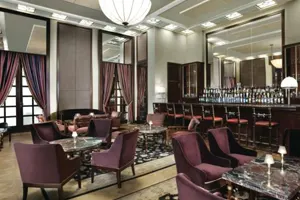
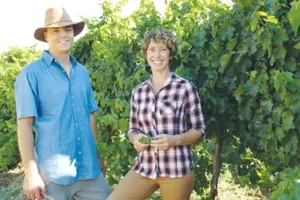
It may be the quality red wines which receive all the plaudits. These are arguably the wines that Israel makes best and the critics love to write about them. Thankfully white wines are making something of a comeback. Wine lovers are realizing they are more versatile with food and are more rewarding in our climate. We are making some very good white wines these days. However, people often forget that Israel is also getting a name for producing wonderful dessert wines.
Unfortunately most Israelis are damaged by a lifelong association with Kiddush wine for Friday Nights, Festivals and Seders. So they associate sweet wine with simply the worst wine, often tasting like sugared water and with religious ritual. Therefore the very word ‘sweet’ has connotations of a cheap and nasty. It is something which is to be avoided, at all costs.
What they forget is that some of the world’s most sought after and expensive wines are sweet, pudding wines. An Eiswein or Trockenbeerenauslese from Germany, Icewine from Canada, Sauternes from Bordeaux or Tokay from Hungary are sweet, are some of the most sublime wines you can taste. There is a world of difference between a dessert wine and a Kiddush wine.
Dessert wines are made in a number of ways. Either by using late harvested overripe grapes, by allowing what is called noble rot, freezing the grapes, or drying them on mats as was done in ancient times. Likewise fortified wines like Port or Sherry were made by adding alcohol either during or after fermentation.
What a tragedy if a wine lover never experiences them, just because they associate the word sweet with Manischevitz, Palwin, King David and Konditon!
Israel in wine terms is part of the Eastern Mediterranean. That is our wine growing region. Some of our neighbours, Greece and Cyprus in particular, are famous as being home to some of the world’s most original dessert wines. Commandaria, from 14 villages on the southern slopes of the Troodos Mountains in Cyprus, is the world’s most historic wine, dating back to the Crusades. Greek wines such as Mavrodaphne from the northwest Peloponnese, Vinsantos from the Assyrtiko grape grown in the volcanic island of Santorini or Muscats from the island of Samos, are some of the world’s best dessert wines. The Etko Centurion Commandaria, Achaia Clauss Mavrodaphne, Argyros Vinsanto and Samos Muscat are world class dessert wines. When you are on holiday seek them out, and bring back bottles for your friends.
The first great Israeli dessert wine that changed many views in Israel, was the Yarden Sauvignon Blanc Late Harvest 1988. The Sauvignon Blanc from the Ortal vineyard was found to have botrytis (what is known as Noble Rot) and the Golan Heights Winery made what may be the best ever dessert wine made in Israel. It was certainly a wonderful wine, and totally unique, because it was never replicated. Those privileged to taste the Yarden Sauvignon Blanc Late Harvest will never forget it. It shocked the cynics, (including the new Israeli wine expert), into realizing that sweet could be ok.
However it is only in the last ten years that Israeli dessert wines have consistently gained international ratings at the very highest level. The finest of these are made from the aromatic, difficult to pronounce Gewurztraminer grape, which is often shortened to the easier ‘Gewurz’.
The Yarden HeightsWine produced by the Golan Heights Winery Sha’al Single Vineyard Gewurztraminer from Carmel Winery, are both made from Gewurztraminer grapes on the volcani plateau of the Golan Heights. Both have been regularly recognized internationally as being world class dessert wines, winning awards and receiving high scores at the very highest level.
The HeightsWine is a play on the words ‘Icewine’ and ‘Golan Heights’. It is produced from Gewurztraminer grapes, which are then frozen at the winery. The result is a rich, honeyed and luscious wine. Carmel Sha’al Gewurztraminer is produced from a single vineyard on the Golan Heights, where the grapes are late harvested. The result of the freezing and late harvesting is that the flavors are wonderfully concentrated and unctuous. Arguably the Sha’al Gewurztraminer is more delicate and refreshing, whilst the HeightsWine is richer and more complex. The Carmel wine has not been made for a couple of years, but there is still some around if you can find it.
Regional variety is provided by the Binyamina Reserve Late Harvest Cluster Select Gewurztraminer. A bit of a mouthful, but they go to the trouble of picking selected clusters of the grapes which are grown in the Upper Galilee. Then is the Tzora Vineyards Or, rare, expensive and wonderful dessert wine, again made from Gewurztraminer, grown in the Shoresh vineyard in the hills that rise towards Jerusalem. The Or has a beautiful balance of fruit and acidity, and the very high acidity prevents the wine from appearing to be too sweet or cloying.
All these are outstanding examples of their art, but there are other dessert wines in Israel covering every price point. The more regular dessert wines are usually made from Muscat. The Muscat of Alexandria grape variety is indigenous to the Eastern Mediterranean. It is a large grape, more commonly known as a table grape for food. However it has been in our area for a long time and may even go back to Biblical times. Some excellent grapey dessert wines are made from Muscat. White or Johannisberg Riesling is rarer in Israel. This is not Emerald Riesling, but the genuine Riesling, famous in Germany and Alsace. The two wineries that make quality dessert wines from this variety are Teperberg and Vitkin.
At Rosh Hashanah, a dessert wine should be served ice cold, even from the freezer (but be sure not to forget it). A regular white wine glass is perfect, just pour in less wine. Avoid the mini liqueur glasses, sherry schooners or mini flute glasses that are so often offered by restaurants in Israel. They will do nothing, apart from contriving to ensure that your precious dessert wine does not show itself at its best.
Remember dessert wines normally come in smaller format bottles, in sizes of half bottles (375 ml) or half liter (500 ml.) They are normally well priced and people tend to drink less because they are sweet. They are wine to sip and savor rather than to quaff.
Your dessert wine will be perfect for the Kiddush. It will then be suitable to accompany the sweet dishes served including the sweet Challah dipped in honey, the traditional apple and honey, dates and sweet carrot dishes which begin the festive meal. They will even go well with the Gefilte Fish, matching the sweetness and yet toning down the heat of the horseradish. Funnily enough, those gourmet kings known as the French, often even start off a meal with an ice cold Sauternes as the aperitif. So that is my recommendation for Rosh Hashanah. Drink sweet!
It is then possible to revert to dry wines for the main course and return to the dessert wine with the puddings. For dry wines I recommend you buy smart. Look in the supermarkets and the larger wine shops. There are some great promotions and good deals to be had. I always believe that the three for 100 shekel category is the best value one. Choose any from Tabor Har, Carmel Private Collection, Golan Height Winery Hermon, or Recanati Yasmin and you will not be disappointed with the wines.
Of course, Rosh Hashanah is not any old Festival, it is the New Year. Therefore it is worth selecting a quality sweet wine to honor the occasion, instead of the lesser expensive, poorer quality alternatives. So quite apart from the fact that dessert wines are ideal for the Rosh Hashanah meal, it is a good time to appreciate Israel’s excellent dessert wines.
A sweet wine for a sweet year. Shanah Tova!

I set off for Cremisan Winery full of curiosity. After all this was the winery that first decided to focus on the land’s indigenous grape varieties. Maybe, they do not have the nobility of Cabernet Sauvignon, but they do exist and this is news to many wine lovers in Israel.
Secondly I was mindful of the long history. Flashback to the end of the 19th century and there were very few wineries. There was the large Carmel Mizrahi, the first commercial winery, Shor & Teperberg, two domestic wineries in the Old City of Jerusalem, producing mainly Kiddush wines, Friedman in Petach Tikvah and Mikveh Israel. Then there were the Christian owned wineries, one in Sarona owned by the Templars, and the two monasteries, Latroun and Cremisan.
Cremisan is therefore part of our winemaking heritage. I always believe we should take time to learn more from the wine producing countries around us. I include countries in the Eastern Mediterranean, such as Lebanon, Cyprus, Turkey and Greece. Even Syria has a winery which is ranked by some above any Israeli winery. So we should be very humble, look around and learn what we can. We should also learn from those from within who are different. Only then we can really understand about ourselves and our terroir.
We should not forget the crucial role played by Monasteries during the Dark & Middle Ages. They kept the wine trade alive and also staked out the future quality wine regions of Europe. The wine industry of today has a great deal to thank the Church, both for its survival and focus on quality. It is interesting also that the Catholic Church not only needed wine for their ritual, but also appreciated good food and wine. Think of the great cuisines of Europe. What do they have in common, that the countries are all predominately Catholic!
I navigated through the Christian town of Beit Jallah, found with difficulty the imposing Monastery and then drove down to the winery. It suddenly occurred to me how Christians in our area are an endangered species. This seems to be ignored by the world media that is so focused on Israel, that they sometimes don’t see what is happening in front of their noses.
The Cremisan Monastery was founded by Father Antonio Belloni, an Italian Catholic monk, in 1885. The meaning of the word is Kerem Zan, the vineyard of Zan. The Monastery belongs to the Italian Salesian Order. It is situated on the northern slopes of Mount Gilo, northwest of the Palestinian town Beit Jala. It is 5 km from Bethlehem and 12 km from Jerusalem. The Monastery made wine to finance Father Belloni’s social activities to help poor children in the Holy Land and to provide a livelihood for local families.
The most striking thing is the terraced vineyards and olive groves in the shadow of the Monastery and winery. They must be some of the most beautiful vineyards there are. Vines vie with olive trees to showcase those two most stubborn and permanent products of our region. Whether you call it Israel, Palestine or the Holy Land, and talk about Biblical times or today, the products are the same: Wine and olive oil.
In fact, remains found in the vicinity of Cremisan show the existence of human inhabitation back in the Bronze Age. Ancient terraces, and old wine & olive presses, provide evidence of agriculture from the same period.
For years Cremisan simply made wine to satisfy the needs of the Catholic Church and their own communities. When I first came to Israel, the wines were only visible in export markets. Once I visted Aqaba in Jordan, saw the wines and purchased them there out of curiosity. Later I remember finding them in the Christian Arab owned liquor stores in Jaffa. They were also sold to regional monasteries. In those days their better known wines were a rustic red called David’s Tower, the well-known Messa, a Communion wine and their Marsala dessert wine.
Until the middle of the 1980’s, many Israelis were visitors at Cremisan Winery and tasted wines from the Monastery. These days, because of green line and border complications, visits are rarer. However I found it a fascinating and beautiful place to visit. Those seeking the wines without going there, can continue to purchase them at the monastery of Bet Gemal, in the Jerusalem Hills, south of Bet Shemesh.
Previously, the winemaker for forty years was Father Lamon, an Italian monk. He began making the wine in 1968. In 2008, a new project was started with Italian assistance to study and improve native grape varieties. New equipment, advanced technology, imported expertise of an Italian winemaker and agronomist, all combined to rejuvenate the Cremisan Winery. Their spacious winery now combines the new and old under one roof. The new look wines were launched originally at Vinitaly and later at the Sommelier Exhibition in Tel Aviv.
A young Italian winemaker was employed, two young Palestinians were sent to Italy to study viticulture and winemaking. Most significantly, one of Italy’s most famous winemakers, the legendary Riccardo Cotarella, became the winemaking consultant. He is a giant of winemaking and one of the most famous wine consultants worldwide.
There are three vineyards. The Bethlehem area including the monastery itself, were the source of grapes for many years. In 1968, after the Six Day War, they also used grapes from Bet Gemal. Too. They also buy grapes from Dir Raffat and Hebron. Recently they decided to focus more on their unique local indigenous varieties. They studied the varieties, made a short list of those with the best potential and ended up working with Baladi Asmar, Dabouki, Hamdani and Jandali.
Their new wines appear under the stylish Star of Bethlehem label. Creating particular interest is the Hamdani Jandali white blend. It finished first in a tasting of Israeli & regional white wines conducted by the famous wine critic Jancis Robinson MW. It has since reached the finest restaurants in Tel Aviv and exports have increased. Only last month it received 90 points in the Wine Spectator.
Cremisan Winery started a trend. Last year Recanati Winery released a Marawi, which is a synonym for Hamdani. An Israeli winemaker and Palestininian grower using an indigenous grape variety grown here long before politics was the primary issue of the area. I see that as a beautiful cooperation. Ariel University and Hebron University in their different ways have both researched the potential of these indigenous grape varieties, and the work is ongoing.
For years the management of the winery was in the hands of the priests. Today the qualification is professionalism. The winemaker and agronomist is Fadi Batarseh, who never drank wine when he was younger, but decided he wanted to study something different. He went to all the trouble of learning Italian so he could study in Italy. He wrote his thesis on the indigenous varieties, also worked in Italy in the Trentino and Orvieto regions, including at Cotarella’s Falesco Winery. He returned in 2012. The Executive Director of the winery is Ziad Giorgio Bitar, who is young, dynamic and efficient. Together the new team has brought Cremisan Winery into the 21st century.
Most of vineyards in the Palestinian area are in the Hebron region. Approaching Hebron is like being in Spain. There seem to be vineyards everywhere, however most grapes are used for table grapes or raisins, are made into jam, or a grape syrup called dibs; Anything but wine. Leaves are also a precious commodity, being used to produce a dish also prominent elsewhere in the Eastern Mediterranean, stuffed vine leaves.
Cremisan Winery has a permanence that outlives the shallowness of daily politics. They play an important pioneering role in our wine industry and whether their buildings end up in Israel or Palestine, is not the issue. No doubt it is important for them, but one thing I do know. They will continue to be an oasis of tranquility in our stormy waters, and anyone truly interested in wine or with the slightest smidgeon of curiosity, should add them to their list of wines to taste and places to visit.
Cremisan Dabouki 2015
Dabouki is the most planted white variety in the Palestinian vineyards. It is also planted in Israel, where in the past it was used for distillation for brandy or arak. The wine has soft tropical fruit aromas, a fat mouth feel and a broad finish. Price: 50-55 ILS
Cremisan Hamdani Jandali 2015
This is a nice wine made with two Palestinian varieties. The wine has tropical notes, lined with grapefruit and lime. It has reasonably good acidity with a refreshing finish. Price: 50-55 ILS
Cremisan Baladi 2013
A light red wine with prominent acidity. More cranberry or pomegranate than ribena. Less good than the whites, but better on my second tasting. It should be served chilled. Price: 50-55 ILS
Cremisan Brandy
I had to make do with a brief sniff from a cask, but the nose was rich, warm with a dried fruit aroma. When they bottle their brandy, aged over decades, it will be well worth a special purchase. They also produce a wonderful olive oil.
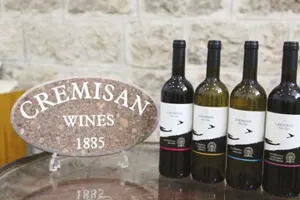
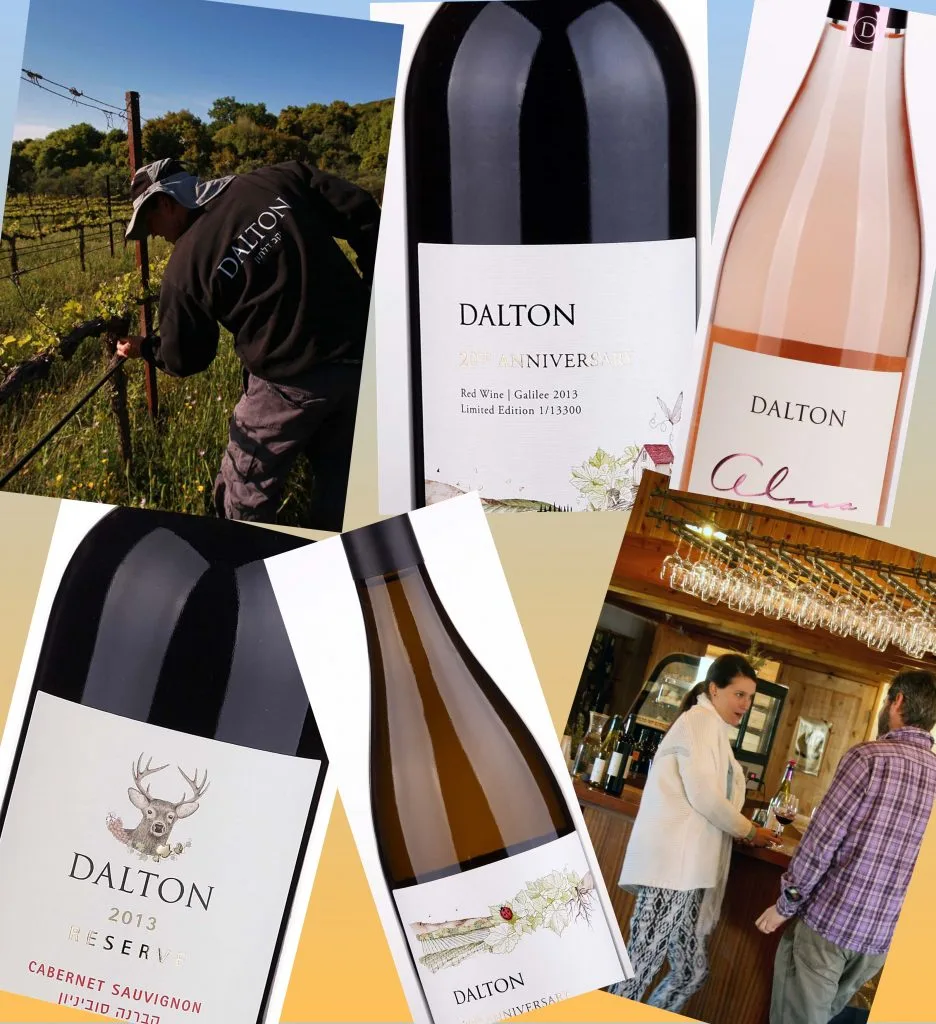
When I was in England, I was known for being Jewish. Having come to live in Israel, I instead became known as the ‘Brit’ or ‘Anglo’, which is short for Anglo Saxon. An Anglo covers anyone from an English speaking country. Considering the English speaking countries are highly involved in producing wine or selling it, it is surprising that there aren’t so many wineries here with an Anglo influence.
There is of course the legendary winemaker from the Golan Heights Winery, Victor Schoenfeld, who hails from California. Paul Dubb from Tzuba Winery is from South Africa. Sam Soroka, winemaker of Jerusalem Wineries, and Barry Saslove once of Saslove Winery, are from Canada. Then there is Alex Haruni from England, whose Dalton Winery has just enjoyed its 20th year anniversary, and it continues to thrive. It is a great success story.
Dalton Winery was the first commercial winery in the Galilee and they were forerunners of a trend. Fast forward until today and there are many Galilee wineries. Someone once told me there were has many as sixty, taking into account wineries of all sizes.
Also the Galilee has become an area where many wineries, even from the center of the country, planted vineyards. The result is that today the Upper Galilee in particular, is covered with vines, which intermingle with the forests, stony ridges, plunging mountains and running streams. It is Israel’s most beautiful wine region. The Galilee and Golan combined, has in the last 20 years become the largest vineyard area in Israel.
Finally, the very Industrial Estate where Dalton is situated, has itself become the heart of the Galilee Wine Region. Apart from Dalton, Adir and Carmel also have wineries there along with other smaller wineries. Furthermore Recanati are building there too. So Dalton really were the pioneers. They were there first.
Alex Haruni was born in London from a family with Indian roots that dealt in precious stones. He first came to Israel as a 24 year old in 1991 to learn Hebrew. When his father Mati Haruni, was looking to invest in Israel, he specifically chose the Galilee. He wanted a business connected to the land, which would involve tourism and showcase the benefits of the Galilee. It was primarily a Zionist project, tinged with the usual business objectives.
They slipped into wine. Armand Maman had an established vineyard and as was the new trend of the time, he had started making his own wine. He needed help and this was the opportunity. Now the Harunis knew nothing about wine. They were whisky drinkers. However they dived in, learning about wine as they went along. They learnt by trial and error with all the ups and downs.
Building a winery is not easy and returns are far slower than in most business. At some times Mati must have thought it would have been more profitable to sell mineral water, Coca Cola or Johnnie Walker. Sometimes they must have wondered what on earth they got themselves into. However they persevered. They had worked out that they needed to reach 300,000 bottles to be profitable. In 1995 they produced 30,000 bottles.
I remember some of the original bottles were very flash and the labels slightly garish. I say this because with development over time, when Alex Haruni absorbed himself in the business, Dalton was to become one of the most stylish, best marketed wineries in the whole country.
Alex Haruni is very measured and cerebral, talking slowly to be sure of what he is saying. Rather like a seasoned veteran in the diplomatic service. However when someone ruffles him, he can respond with a surprising sharpness that shows the passion flowing within, even if it usually held carefully in check.
It is fair to say that Dalton was the winery that his father built, but it was Alex that filled it with content. His father was very wise at the outset to employ a consultant, something only the Golan Heights Winery did in those days. They started a long relationship with flying winemaker John Worontschak that continues until today. Worontschak is an Australian living in England, and advises wineries all over the world. He still comes here three times a year.
Alex Haruni is one of the most interesting people to talk to in the wine trade, because he has learnt at the sharp end. He is knowledgeable enough to act as a judge in international competitions. It is not a ‘look at me’ winery, and Alex is not a ‘look at me’ type of owner. He manages in a very modest way but he is innovative, and everything he does is stylish and well thought out. I call his a ‘less is more’ approach, and the winery is reflected in this image.
Dalton Winery today produces just under a million bottles a year. The entry level wines are called Canaan. Then there are the Dalton varietals, the D series, the Alma blends, Reserve label and the Single Vineyards. The Homage label of a red and white wine is the prestige label that honors his parents, Matatia and Anna, who invested and persevered. The result of their effort can be seen not only in where Dalton is today, but also where the Galilee is today as far as both wineries and vineyards are concerned.
Alex Haruni is a supporter of new talent. He did not hesitate to appoint a Russian Oleh Hadash (new immigrant), Arkadi Papikian, as a winemaker. His next winemaker was a woman, Naama Sorkin. In those days there were very few women winemakers. His latest appointment is Guy Eshel, which shows confidence in new blood. Eshel is young, with impeccable credentials but as yet untried. One day, if not already, Eshel will thank Haruni for his support and the opportunity. Mind you Haruni will also be grateful for gaining such a young talent for the winery’s immediate future.
As far as wines are concerned, they have also shown innovation. The red Zinfandel was for a time a rare serious attempt at a quality wine from this variety. Their wonderful Petite Sirah shows they are not just tied to the famous grape varieties. They were also the first winery to introduce Pinot Gris and to revive Semillon as a quality variety and amongst the first to produce Mediterranean style blends.
Haruni is a great fan of Shiraz. He believes it grows particularly well in Israel and shows Israel at its best. He likes varieties such Albarino from Galicia in Spain and Gruner Veltliner from Austria. He also has hopes for Jandali, the indigenous variety here, which he believes could develop in to something worthy. Like all of us, he wishes wineries would work together better to market Israeli wine abroad.
So congratulations are in order. We should thank this Anglo for bringing us twenty years of growth and stability in the topsy-turvy world of Israel wine. Under Alex Haruni’s wise stewardship, even better years are ahead of them.
Dalton Alma Vin Gris 2015
An onion skin colored pale pink rosé made from Grenache and Barbera. Very delicate fruit notes with great acidity. Refreshing. Vin Gris (literally grey wine) is the terminology often used in France & Morocco for a pale rosé. PRICE: 75 ILS
Dalton Pinot Gris 2015
Crisp, fresh and fruity, with citrusy notes providing a refreshing finish. One of the first releases of this variety in Israel. PRICE: 65 ILS
Dalton 20th Anniversary White 2014
Limited edition wine made from Chardonnay and Sauvignon Blanc. It has a tropical fruit nose balanced by green apple. It is rich, oaky and flavorful. It shows good complexity as it warms up. Don’t serve it too cold. PRICE: 90 ILS
Dalton Cabernet Sauvignon Reserve 2013
A smooth & deep red, with black berry fruits notes, hints of ripe plum and sweet vanilla. Full of flavor, with a silky texture and a broad, tannic finish. PRICE: 110 ILS
Dalton 20th Anniversary Red 2013
Limited edition. A blend of mainly Cabernet Sauvignon and Shiraz with small amounts of Grenache, Mourvèdre and Merlot. A full bodied, powerful wine with a bold black fruit nose, velvety texture and prominent oak flavors of vanilla. It has a long balanced finish. PRICE: 200 ILS

In a praiseworthy development, Tabor Winery has created the first ecological vineyard in Israel by fulfilling the guidelines laid down by the Society of the Preservation of Nature, over a three year period. Furthermore, they intend to extent this policy to 90% of their vineyards.
An ecological vineyard is more known as self-sustainable in wine terms overseas. This fits in to a range of environmental friendly standards in the vineyard, which are good for the health of the surroundings, the quality of the vines and also the soul of the practitioners. Sustainability is all about maintaining an ecological balance between nature and the vineyard. Putting the morals back into vineyard growing, if you like.
For those that want harmony with nature, there are a number of buzz words like organic, biodynamic and natural. Firstly there are organically grown vines. In this instance the wine is not organic, but the fruit is grown organically. This is achieved by avoiding synthetic pesticide or additives. An organic wine is made without adding sulfites at the winery.
Biodynamic farming is similar to organic, but takes into account astrological and lunar influences, and is practiced by believers with an almost religious fervor. There is almost a mystical quality to the beliefs. Burying a cow horn filled with dung is one thing they do, but before you pooh pooh it, some of the finest wineries swear by it.
Then there are Natural Wines, a broad church without official definition, which basically means making wine in the laisser faire method without additions or unnecessary interventions in winemaking. Some kosher wines will be suitable for vegans and vegetarians, depending on the fining material used.
There has been organically grown wine (like the Yarden Odem Vineyard Chardonnay) and even an organic wine, Bashan, which was founded as a kosher and organic winery in the 2000’s, but it unfortunately did not last. However in Israel we are behind the curve in production of ethical wines.
Planting a vineyard to produce wine is in itself a peaceful act. In ancient times, it was considered important enough for a soldier to stay home and look after the vineyard rather than go to war. However in terms of nature protection, creating a vineyard is a violent act because of the necessary preparation of the land. It creates a scar of disturbance to the local flora and fauna.
So Tabor Winery decided to attend to this issue in their Ramat Sirin Vineyard. This is a large vineyard site, which is kept immaculately, with its own unique terroir. It is situated in the Lower Galilee on a soil of volcanic tuff and basalt stone, at 400 meters altitude with a view of Mount Tabor, Mount Hermon and the Sea of Galilee.
They allowed a cover crop to grow, planted 400 trees within the boundaries of the vineyard, created nesting areas for birds, and placed piles of stones and boulders to encourage the return of wild life. The flora and fauna that settles will create its own ecosystem and a new order of things in which the natural balance of nature is respected and encouraged. The results were recorded and monitored over a three year period.
Michal Akerman is the person responsible for this initiative. She is tousle haired with a perky smile and large, bright eyes. She is a peculiarly Israeli blend, with grandparents from Syria, Morocco, Poland and Germany and a father from Peru! Her work on a kibbutz gave her a love of the land. She worked with dates, mango, avocado and citrus. After the army, again on kibbutz, she first became responsible for a vineyard, but it was for table grapes. She then travelled to South America and found herself working in vineyards in Chile and Mendoza, just to earn pocket money. Almost without realizing, she slipped into a career as a viticulturist.
Whilst studying at the Faculty of Agriculture in Rehovot, she joined Barkan Winery. After finishing her first degree, she worked in South Africa for a year, before returning to Barkan as Chief Agronomist in 2004. Barkan was then in a campaign to become the largest winery in Israel and by the time she left, they had 8,000 dunams of vineyards, many developed on Akerman’s watch.
In 2009, she was head hunted by Tabor. She was happy to go to a smaller winery where her decisions would have a greater effect. She was also delighted to work for a grower CEO, who understood how important vineyards are to the final quality of the wine.
She is a great one for balancing the old and new in agriculture. She likes to deal with the hand provided by nature with the added assistance of new technology. She keeps her finger on the pulse by receiving all kinds of statistics from weather stations transmitted in real time to her cell phone, but is most at home sniffing the earth by visiting a vineyard. When we met, she just had to visit a vineyard on the way, to touch base, and show the vines she had not forgotten them.
Michal explained to me: “The new practices become a way of life. We can’t control everything and have to be part of nature.” What impressed me most, was her insistence on also tasting the wines with the winemakers, even from different plots. This is certainly someone who believes she grows wine, not grapes.
Under Michal’s management, the vineyard area has grown from 550 to 2,400 dunams. Tabor as a winery is situated in the Lower Galilee, and the majority of its grapes come from the Galilee and Golan, however Akerman has the flexibility to find the best fruit which takes her all over Israel. During her time she has also brought new varieties to the Israeli wine scene like Roussanne and Tannat.
Tabor Winery was founded in 1999 by four grape growing families of Kfar Tabor. The winery is today managed by Oren Sela, the younger generation of one of them. The winery is owned by the Central Bottling Co., the country’s premier beverage company responsible for producing or representing mega global brands such as Coca Cola, Carlsberg and Johnnie Walker. The wines are distributed by IBBLS, the importers & distributors of Diageo, the world’s largest spirits company.
However for all that hype and the association with big brands, the winery is managed by one of the founder growers, with the attention to detail in the vineyards of a small boutique winery. The winemaker is the same as when the winery started on its way. It has grown for sure. It is now the fifth largest winery in Israel producing two million bottles a year.
What is interesting is that the success of the winery is not just in the good value stakes, where you would expect Tabor to shine, but also the highest quality arena, where their wines compete with Israel’s finest. Their success across the range is very impressive.
In the recent past, the Har ‘Mount Tabor’ Chardonnay was selected in the Top 100 Best Value Wines of the Year by the Wine Enthusiast, one of the important wine magazines in America. It is extremely rare for an Israeli wine to be on this list
The Adama Merlot scored 93 points in the Wine Enthusiast, then the highest score ever, for any Israeli wine given by this magazine. The Adama Roussanne was recommended by Oz Clarke’s Wine A to Z and the Sufa, a red wine blend, was recommended in Hugh Johnson’s Pocket Wine Book.
The prestige Limited Edition received the top score of any Israeli wine in the Wine Spectator last year, and Tabor Winery was the only Israeli winery invited to the New York Wine Experience, the world’s most prestigious gathering of the finest wineries in the world.
And that is abroad where tastings are blind, and labels don’t carry the baggage they do here. In Israel, Tabor has also excelled. It was the leading winery with no less than five gold medal trophies in the Best Value Competition 2016, for wines up to 79 shekels. Even more impressive, it was also the leading Israeli winery in the Eshkol Hazahav 2016 competition, the Israeli wine Oscars, with four gold medal trophies. The Adama Sauvignon Blanc is a banker, seeming to wine gold in both competitions year after year.
I always think that kosher as a concept would be easier explained to the non-Jewish, general market, if accompanied by self-sustainable vineyards. The two really seem to go together. So I applaud this pioneering initiative by Tabor Winery, and hope their lead is followed by other wineries.
Regardless of sustainable practices in the vineyards, it is also a winery with proven and sustainable quality at every price point. It seems that those that care about vineyards and the environment, also make wines with good karma. What goes around, comes around.



There is nothing new under the sun in winemaking. When at Carmel’s Zichron Ya’acov Wine Cellars, I would pass the large barrels on display, and explain that “they were used to ferment the wine 125 years ago.”
In fact, it was so hot in July and August in 1890, pre electricity, that they had to import a special ice machine from Cairo, and large blocks of ice were lowered in bags into the barrels to reduce temperatures during fermentation.
In about the 1920’s, when Soleh Boneh was founded, cement tanks replaced the large barrels because they gave more capacity. Originally they did not line the cement tanks, and the wine became tainted and had to be poured away. Then the cement tanks were lined with glass. Think how expensive that must have been.
Twelve years ago I would show these cement tanks as museum pieces explaining “this is how we used to make the wine.” Fast forward to today. Big barrels are back in. Carmel Winery has introduced a fleet of new fourdres (5,000 liter barrels) into its cellars. These provide gentle oxidization, without imparting too much oak flavors.
Likewise cement tanks. The new winemaker liked the results of wine stored in cement tanks. The wine drops bright better in cement than in stainless steel, it is good for temperature retention and the cement produces an oxidation mid-point between an inert stainless steel tank and a small oak barrel.
So a number of small Italians, were employed from a company specializing in revitalizing cement tanks, to restore the cement tanks one by one. Today they are lined with epoxy and used with pride. Cement is back in throughout the world. Who said progress is only looking forward & not looking back
However large barrels and cement tanks is looking back in years counting in the hundreds. This pales into insignificance when you compare making wine in Kvevri . These are large oval, egg shaped earthenware vessels used for fermenting and storing wine. They were used for winemaking up to 8,000 years ago. Later the Greeks and Romans called them pithos and dolium respectively.
They are enormous containers, made from terra cotta, red clay, which are fired in an open fire. They are sometimes larger than a person, and always handmade, so each will vary slightly in shape. Kvevri are used again and again. Some in Georgia go back centuries. They should not be confused with amphorae which were used later, more for storage and transportation.
Hugh Johnson relates in his ‘The Story of Wine’, how in Georgia, you would visit a family winery and the family would have a private cellar, yet there were no out buildings housing barrels or tanks. The only clue was a series of molehills in the ground nearby where these large containers were buried.
He writes that the family would hollow out a log, slop the grapes from a harvest into it and stamp on the grapes until all the must or juice had been released. Then the juice, grape skins, pips and all, would be scooped up and placed in these massive containers, stoppered up and buried deep in the soil.
The temperature of the ground would be cool, and the wine slowly fermented over a long period. In the spring the family would ladle the wine out into another Kvrevi, this time leaving the skins behind and the wine was stored this way until it was drunk.
Delightfully there are still families making wine this way in Georgia and some modern winemakers in Friuli, Slovenia and Georgia, believing in tradition, nature and retro, have also returned to making wines this way.
Why not in Israel I hear you ask Well, one enterprising family has introduced Kvevri to Israel. This was under the direction of Lina Slutzkin who founded her Kadma winery in Kfar Uriah in the Judean foothills in 2010.
She was an engineer who worked for Intel for twenty years. The Slutzkins then bought a farm and she got an itch and decided to do something completely different.
She wanted a winery, but was determined to be different from everyone else. She sought encouragement, but most people lacked her imagination and thought she was crazy. One encouraging beacon was Nir Shoham, owner of the Soreq Winery Winemaking School. He taught, encouraged and advised her. That was enough to send her on her way.
She had made Aliyah from Georgia as an eight year old girl in 1972, and adopted Israel without feeling the slightest sentimentality to her mother country. She is quite adamant that when she came to Israel, she shrugged off her Georgian past forever. She explained that she did not look back but then said wistfully: “but those who think France has the best cuisine in the world, don’t know Georgia!”
Anyway to make her dream come true, she returned to Georgia for the first time in 36 years and went in search of some Kvevri to bring back to Israel. Making these is an ancient and rare artisanal craft, passed down in families over thousands of years, but it is a declining art.
She had to find the few remote villages where these large containers are still made. That was the easy part. Then she had to pack them safely and ship them to Israel. Drama and no little determination was the order of the day, but, wonder of wonders, they arrived safely.
Unfortunately the soil temperature in Israel was too warm for the Kvevri to be buried in the Holy Land as they are in Georgia, but nothing was to prevent Lina from achieving her aim.
The winery sought advice from winemaker Dr. Arkadi Papikian, one of the leading wine consultants in Israel, and Professor Amos Hadas, author of ‘The Vine and Wine in Archaeology of the Land of Israel’. Professor Hadas explained that pottery containers used for fermentation were never buried in the soil in Ancient Israel.
Eventually they decided to stand the earthenware vessels in a cold storage room. Cold maceration, fermentation and malolactic fermentation all take place within these containers making them the only winery in Israel that makes wine in this way. Then the wines are aged in oak barrels in the usual way.
Lina explained that they wanted to combine these ancient vessels with modern techniques to make wine in a country with such an ancient winemaking history.
The benefits of the Kvevri are that fermentation is longer and more even and the narrow conical base means less prolonged contact between lees (sediment) and wine. It is moving and exciting to see these vessels of winemaking history in use here in Israel. Well worth a special visit.
Another reason is to taste the cheeses, cut vegetables and the delicious Georgian paste from a secret recipe and the scrumptious bread baked by Reuven Grafton, a local baker. You need another reason Maybe it is to meet Vlad, Lina’s husband from St. Petersberg. He is a fascinating walking encyclopedia of wine information from ancient history until today. Unfortunately he works in Hi tec by day, but if you can catch him helping out on his days off, you are the winner.
Future dreams Maybe, to bring the Georgian variety Separavi, to Israel, to ferment in her Kvevri. Now that would be interesting!
Modern winemaking technology here may give the impression Israel is in the New World of winemaking. The return of cement tanks and large barrels reminds us of our Old World roots. However Slutzkin’s Kvevri, the discovery of a very large 3,600 old wine cellar at Tel Kabri in the Galilee and the hundreds of old limestone wine presses that decorate our landscape, help to remind us that our true beginnings are in the Ancient World. It seems what goes around, comes around.
The wines I tasted were as follows:
Kadma Chenin Blanc 2014
A white wine with a blowsy, tropical fruit aroma. Its sweetness is quite apparent, but is offset somewhat by a clean finish. It will be popular amongst those who like semi dry wines. Price: 90 ILS
Kadma Gemino 2013
This was my favorite wine, made from a blend of Sangiovese and Merlot. It has a cherry berry aroma with an earthy, peppery backdrop. It has medium weight, with a refreshing finish.
Price 70 ILS
Lirae Kadma 2013
A blend of Cabernet Sauvignon and Merlot, with aromas of blackcurrant and ripe plum. It has a full flavor with a vanilla coating.
Price: 80 ILS
Copia 2013
A blend of Cabernet Sauvignon, Merlot and Sangiovese. The wine is full bodied, fruity with black fruit dominant and exhibits a certain mouth filling complexity. Good finish.
